
Yacht Sourcing > The Ultimate Guide to Choosing the Perfect Dinghy or Tender for Your Yacht

The Ultimate Guide to Choosing the Perfect Dinghy or Tender for Your Yacht
- June 3, 2024
A dinghy, also known as a tender, is an indispensable companion for any yacht owner. It serves as your trusty chariot for exploring secluded coves, reaching shore for provisions, or enjoying watersports. With the vast array of options available, choosing the perfect dinghy can be a daunting task. This guide will walk you through the essential factors to consider and highlight some standout brands to make your decision smoother.

Size and Capacity
The ideal dinghy size depends on your yacht’s size and how you intend to use the tender. If you primarily need a shuttle for a couple of people and light gear, a smaller dinghy (8-10 feet) may suffice. However, if you anticipate carrying more passengers, equipment, or supplies, a larger tender (12-14+ feet) would be more suitable.
Construction and Materials
The construction and materials of an inflatable dinghy significantly impact its durability, performance, and longevity.
- Hypalon or PVC: Hypalon, a synthetic rubber, boasts superior resistance to UV rays, abrasion, and chemicals, making it a preferred choice for demanding conditions. PVC is a more budget-friendly option, offering good durability and performance.
- Seam Construction: Welded seams generally provide greater strength and watertightness compared to glued seams.

Hull Design
The hull design influences the dinghy’s performance in various sea conditions:
- Flat Bottom: Offers stability and shallow-water capability, ideal for calm waters and beach landings.
- V-Shaped Hull: Provides a smoother ride in choppy water, better suited for open water excursions.
- Rigid Inflatable Boats (RIBs): Combine an inflatable collar with a rigid hull, delivering exceptional performance, stability, and handling.
Engine Options
The choice of engine depends on the dinghy’s size, intended use, and personal preferences.
- Outboard Engines: Most common and versatile, offering a range of power options for various needs.
- Electric Motors: Environmentally friendly and quiet, suitable for shorter trips and protected waters.

Additional Features
Consider these features to enhance your dinghy experience:
- Carrying Handles and Davit Lifting Points: Ease the transport and storage process.
- Inflatable Keel or Floor: Improves tracking and stability.
- Storage Bags and Pockets: Convenient for stowing gear and supplies.
Yacht Sourcing’s Recommended Dinghy Brands: Your Gateway to Unparalleled Tender Adventures
At Yacht Sourcing, we understand that your yacht tender isn’t just a vessel – it’s an extension of your nautical lifestyle. That’s why we offer premium inflatable dinghy brands that blend innovation, durability, and performance:
- Takacat: Renowned for its catamaran-style hull design, Takacat dinghies offer unparalleled stability, exceptional load-carrying capacity, and effortless planing. Their unique design and portability make them ideal for yachts with limited storage space.
- Senous: Senous inflatable tenders are synonymous with quality and reliability. Their diverse range of models caters to various needs, from compact and lightweight options to spacious and high-performance RIBs.
- Polycraft: Engineered for toughness, Polycraft dinghies feature a unique polyethylene construction that resists punctures, abrasions, and harsh marine environments. Their ruggedness and versatility make them a popular choice among adventurers and avid anglers.

Beyond the Basics: Yacht Sourcing’s Commitment to Your Tender Experience
We don’t just offer dinghies – we offer a comprehensive approach to ensuring your tender experience is seamless and enjoyable. Our expert team is dedicated to helping you select the perfect dinghy, providing valuable advice, and ensuring your purchase is tailored to your unique requirements. We’re committed to exceeding your expectations, offering exceptional customer service, and providing ongoing support for all your tender needs.

Set Sail with Confidence: Discover Your Ideal Inflatable Dinghy at Yacht Sourcing Today
Don’t leave your tender selection to chance. Visit Yacht Sourcing today and explore our exceptional range of inflatable dinghies from Takacat, Senous, and Polycraft. Let us guide you towards the perfect tender that complements your yacht and unlocks unforgettable adventures on the water.
Interested about this topic? Check out other articles from Yacht Sourcing below:
- The Best Time to Visit Bali for an Unforgettable Experience
- Cruising in Elegance: Discovering the Allure of Pink Beach Indonesia with Yacht Sourcing
More Stories

Unveiling Your Dream Yacht: 5 Must-Haves for Epic Yachting Adventures

Unlock Your Boating Dreams: Benefits of Attending a Boat Show

Unveiling the magic of Bali: Things to Do in Ubud

Luxury Sailboats and Catamarans for Sale: Discover Dufour and Fountaine Pajot with Yacht Sourcing Indonesia

Yacht vs Cruise Ship: Which One is Right for You?

Seminyak: The Ultimate Guide to Bali’s Chic Beach Town

HEADQUARTER
Destinations
Yacht management
BUY A YACHT
CHARTER A YACHT
MANAGE YACHTS
- @[email protected]
- +62 812 3600 1024
Get an exclusive offer for yacht charter and sales, also get the latest yachts update right in your inbox!
A Guide to Yacht Tenders and Their Types
- by yachtman
- August 30, 2023 June 22, 2024

The world of yachting is captivating. Its vessels and destinations are breathtaking. To indulge in this opulence, one must learn about yacht tenders . These small boats ferry passengers and supplies between the yacht and shore. They can also be used for recreational activities like water sports or exploring shallow areas. Yacht tenders are accessories that enhance the luxury experience.
There are several types of yacht tenders. The most common is the inflatable tender . These are easy to store and transport as they can be deflated. They are also highly versatile and offer excellent stability. Another popular type is the rigid-hull inflatable boat (RHIB) . This combines a rigid hull with inflatable tubes, ideal for cruising or high-speed adventures.
For those who need more space, there are larger tenders such as limousine tenders or chase boats . These offer plush seating areas and onboard amenities. The global superyacht industry was worth $9.5 billion in 2020, showing the popularity of luxury yachting.
What are yacht tenders?
Yacht tenders are small boats used to transport folks and supplies to and from a bigger yacht. They’re an awesome means of transportation and can also be used for recreational activities. Here are some key points on yacht tenders:
- Types include rigid inflatable boats (RIBs), jet skis, and traditional dinghies .
- RIBs are popular due to their stability, versatility and durability .
- Jet skis offer speed and agility , great for water sports fans.
- Traditional dinghies are often used for auxiliary boats or life rafts.
- Yacht tenders come with engines for faster travel and storage compartments.
- Guests can access shorelines or explore secluded coves during yacht journeys.
When selecting a tender, consider: the intended use, passengers capacity, ease of maintenance, compatibility with the main yacht.
To make the most of the experience, here’s what to do:
- Pick a tender that fits your needs.
- Prioritize safety features: life jackets, navigation lights, emergency equipment.
- Optimize storage capacity.
- Consider ease of operation: user-friendly controls, manageable size.
By following these tips, you can make the most of your yacht tender. Then you’re ready to set off on your next yachting adventure!
Importance of yacht tenders
Yacht tenders are hugely important for a great yacht experience. They provide transport between the yacht and shore, allowing passengers to explore land-based activities. Without them, yachts would be stuck at sea, limiting the experiences available.
Let’s look at their types and functions:
| Type | Functionality |
|---|---|
| Rigid Inflatable Boats (RIBs) | Versatile, stable and durable. Perfect for passengers and supplies. |
| Luxury Tenders | Premium features and luxurious amenities. |
| Jet Tenders | Propelled by powerful water jets for higher speeds. |
| Electric Tenders | Electric motors or hybrid technologies. Eco-friendly. |
| Fishing Tenders | Fishing gear and amenities for anglers. |
Yacht tenders are multi-functional. They can be used for water sports, diving expeditions or exploring bays. Plus, they’re essential for safety. In an emergency, they can be used as lifeboats or to help with evacuation procedures.
When choosing a tender, consider size, capacity, needs, fuel efficiency, and ease of use. Prioritize these to get the right tender for your yacht experience.
Yacht tenders are necessary for luxury yachting. They allow passengers to explore, enjoy recreational activities, and keep everyone safe.
Types of yacht tenders
Yacht owners have many options for the perfect tender for their vessel. Let’s check out the types of tenders and their unique features!
RIBs (Rigid Inflatable Boats) offer stability and versatility. They have a rigid hull with inflatable tubes, great maneuverability, and are popular for watersports.
Jet tenders use jet propulsion, are known for shallow draft, and are great for exploring shallow waters.
Classic tenders have a timeless design, combining modern amenities with traditional craftsmanship. They offer a luxurious and comfortable experience.
Limousine tenders are the epitome of luxury. They feature opulent interiors, spacious cabins, and are ideal for entertaining or private transfers.
Other types of tenders include sailing yacht tenders that are powered by wind.
Choosing the right yacht tender is essential for complementing your yachting lifestyle. Factors like personal preferences, usage, and storage space onboard the yacht should be taken into account.
Picture this: on a superyacht, cruising along the French Riviera. Suddenly, it’s time to explore ashore. The captain deploys the sleek jet tender from its storage area near the stern. The guests gasp in awe as they embark on an exciting ride to discover hidden treasures!
Factors to consider when choosing a yacht tender
Choosing the right yacht tender involves many important factors. These can affect the tender’s performance and functionality during voyages. Here’s what to remember:
- Size and Capacity: Look at the tender’s size and capacity. Too small and it won’t fit everyone. Too big and it may be hard to manage.
- Performance and Speed: Check the power and speed. It should be enough to get between the yacht and shore quickly and smoothly.
- Storage and Accessibility: Consider storage on the yacht. Look at how easy it is to store, launch, and retrieve. Also, think about safety and convenience when it comes to boarding.
Functionality is more important than looks. Don’t sacrifice practicality for design.
Boat International has something to say. They recommend considering the boat’s purpose before making a decision. This guarantees the tender is perfect for your needs and makes sailing even better.
Popular brands and models of yacht tenders
Yacht tenders are popular for their reliability, functionality, and style . Let’s look at the top brands and models.
Williams’ Dieseljet 565 is known for speed and comfort. Novurania’s Chase 31 has luxury amenities for larger groups. ZAR Formenti’s ZF-5 is perfect for storage and transport. AB Inflatables’ Nautilus DLX is durable and versatile.
When choosing a tender, think about capacity, length, price , and features . Get the best boating experience!
Yacht tenders come in many shapes and sizes. Knowing which one is suitable for your yacht is essential. Options range from lightweight inflatables to rigid-hull inflatables . These tenders provide transportation to and from the yacht, and also act as recreational vessels. RIBs and jet tenders are popular, but there are lesser-known alternatives too. Amphibious tenders can move between land and water, giving access to remote places.
Picture this: sailing along the Mediterranean coast until a problem with the yacht’s engine arises. With the right tender onboard, you can reach shore quickly and safely.
By understanding the available tenders, yacht owners can make informed decisions. The right tender is vital for exploring hidden coves and enjoying water sports activities.
Additional resources and recommendations
Prioritize finding a reliable manufacturer with years of experience in creating top-notch yacht tenders. They’ll provide you with an enduring vessel that can handle various weather conditions.
Look for customization options so you can tailor the design and features. Also, make sure it has all necessary safety equipment such as life jackets, first aid kits, and fire extinguishers.
Find a dealer who can offer maintenance services to keep your tender in peak condition. Look for a substantial warranty in case of any manufacturing or design defects.
Moreover, consider the weight capacity of the tender to guarantee comfort and stability.
Invest in advanced navigation systems for accurate positioning and safe travels.
Check reviews and testimonials from other yacht owners to understand the quality and performance of different tenders.
Additionally, look for manufacturers who offer training programs to operate and maintain the tender safely and efficiently.
By following these steps, you can get the most out of your yachting adventures.
Frequently Asked Questions
Q: What is a yacht tender?
A: A yacht tender is a small boat used to transport people and supplies between a yacht and the shore.
Q: What are the different types of yacht tenders?
A: There are several types of yacht tenders including Yacht types and sizes like rigid inflatable boats (RIBs), center console tenders, jet tenders, and classic tenders.
Q: What is a rigid inflatable boat (RIB) tender?
A: A RIB tender is a popular type of yacht tender that has a rigid hull and inflatable tubes around the sides for buoyancy and stability.
Q: What is a center console tender?
A: A center console tender is a type of yacht tender with an open deck design and a steering console located in the center of the boat.
Q: What is a jet tender?
A: A jet tender is a type of yacht tender that is powered by a jet drive system, using water propulsion instead of an outboard or inboard engine.
Q: What is a classic tender?
A: A classic tender refers to a traditional-style yacht tender, often made of wood, with a timeless design and elegant features.
Leave a Reply Cancel reply
Your email address will not be published. Required fields are marked *
Save my name, email, and website in this browser for the next time I comment.

The Best Tenders for Yachts in 2024
Tenders in a nutshell
A tender is a boat that services a larger vessel (referred to as the mothership ). It can take many forms and deliver a wide range of conveniences.
Historically called ‘ship’s boats, ‘ tenders have supported large vessels for centuries. They have been used for guest transfers, refuge boats, landing crafts, stowed on deck or towed astern—little has changed!
Whilst the vast majority of tenders employed by smaller yachts are typically rigid inflatable boats, the modern-day superyacht considers a multitude of vessels indispensable.
Hull categories
We’ve been specialising in building boat tenders for over a decade, yet with such a degree of cross-over and with a seemingly endless request for custom configurations, categorising tenders remains a challenge.
Nonetheless, at the top-most level, we categorise all tenders under one of the following three hull types:
Fully Inflatable A lightweight vessel relying solely on inflation for buoyancy.
Rigid Inflatable A vessel with a hull constructed from rigid materials such as aluminium or fibreglass, supported with an inflatable or foam collar for added buoyancy in high seas.
Rigid A fully rigid hull without a buoyancy collar of any type.
Tender sub-categories
In addition to hull type, we can identify most yacht tenders under the following sub-categories:
⌾ Open ⌾ Chase ⌾ Classic ⌾ Foil ⌾ Catamaran ⌾ Dive

What is an open tender?
An open tender is principally a single-deck boat with no enclosed cabin. Chiefly a guest transfer boat with ample seating both forward and aft, open tenders are day boats without accommodation above or below deck.
While we see many open tenders dedicated to guest transfers, by their very nature, they can also incorporate centre console boats, some dive boats, landing crafts, and even limousines.

What is a chase tender?
As the name suggests, a chase tender—which can also be an open tender—follows the mothership.
Chase boats can take on many guises since their main attribute is size. As a result, they are generally not stored on board but instead towed astern.
Often very angular in design, with excellent seaworthiness, chase boats need to be able to withstand the rigours of being towed by the mothership. Whilst a lot of large chase tenders can be operated entirely independently, towing very long distances (such as transatlantic) is not advised.

What is a classic tender?
Tenders with the hallmark of classic design are styled with an exquisite, continuous line from the head to the heel.
Echoing the lacquered freeboards of a Riva Ariston or the flawless veneers of a Hinckley picnic boat, a modern classic from the likes of J Craft or Wajer will feature a gracefully tapered form, avoiding right angles altogether.

What is a foiling tender?
Combining thrust with lift (as an aeroplane does), high-speed tenders have the opportunity also to become airborne.
Less drag, higher speeds and lower energy consumption are the key advantages, although from a guest comfort perspective, being elevated above a big swell scores very highly.

What is a catamaran tender?
Largely associated with utility boats, catamaran tenders (not to be confused with catamaran sailboats) present superyacht owners with a number of major advantages over their mono-hulled counterparts.
Favoured as a utility vessel, a twin-hulled catamaran can be built much wider than an equivalent-length vessel with a mono hull. It offers increased stability and, therefore, a more comfortable ride in bigger seas. Thanks to a smaller surface area, there’s also less drag, which results in faster speeds and higher efficiency.

What is a dive tender?
We build tenders optimised specifically for scuba diving, however, given the range of crossover in the market, the likes of amphibious boats, beachlanders, some centre consoles, landing crafts, open tenders, RIBs and utility boats can also work perfectly well for diving.
Storage, floor space and, most importantly, the convenience of easy access to the water are key attributes of a versatile dive boat tender.

The right tender for the job
So far we’ve categorised our tenders — now to define which tender is best suited to which scenario.
Amphibious Tender
✓ Rigid ✓ Rigid Inflatable ✓ Open ✓ Chase ✓ Tow or stow
Sharp stones, steep drop-offs, inclement weather, and changing tides needn’t worry your crew when you have the luxury of an amphibious tender. Visit almost any secluded cove or spit with virtually no risk of becoming stranded or beached.
Go where other boats simply wouldn’t dare, landing on shorelines in rough breaks and on rugged terrain. Be sure to do your homework, though, as most beaches and marinas will require permission to stroll out the sea on an amphibious tender.

Beachlander Tender
We are all about time spent on the water, but the sensation of stepping off a tender onto the warm sand is in itself a joy to behold. We don’t mean clambering over the side of a rib and bouncing awkwardly into the shallows. We mean stepping from a dry boat onto dry sand.
Whether you intend to spend the day in your swimmers or are off for an island excursion, getting wet feet before you begin should be a choice.
We offer a beachlander option on all of our aluminium rigid inflatable boats .

Classic Daysailer
✓ Rigid ✓ Open ✓ Classic ✓ Stow
Strip back the layers of modernity that clothe large motor yachts and delve into a tactile sailing experience with a classic daysailer. Built a short distance upriver from SYTT, the Spirit R30 is a daysailer that marries cinematic elegance with unparalleled craftsmanship. Born from the same yard that graced the silver screen in iconic Bond films such as Casino Royale and No Time To Die , this 9.2m yacht epitomises timelessness with its exquisite wooden construction. Small sailing boats like the R30 can be de-rigged and stowed, nestled within a yacht’s garage or gracefully perched on deck.

Center Console
✓ Rigid ✓ Open ✓ Chase ✓ Tow or stow
Synonymous with the Florida Keys, the traditional centre console (or center console in the US), is typically a single-deck boat with the helm in the middle.
Geared towards recreational fishing, the centre console maximises the floor space while, crucially, allowing for full access around all sides of the boat. On smaller boats, seating is often sacrificed for floor space, while larger centre consoles fitted with cabins creep into the Sports Fisher sector.
Not intended to be an especially dry boat, both crew and guests are often exposed to the elements. The upshot is that centre consoles and, more so, sports fishers, tend to offer huge power, which is especially useful for long day trips from the mainland.

High-performance
‘Go-fast’ boats, as the name suggests, are built exclusively for speed. More commonly known as ‘cigarette boats’ due to their shape, go-fast boats are not for the faint-hearted.
A craze immortalised by the Cigarette Racing Team, modern-day cigar boats can achieve speeds of over 100 knots. Largely impractical as a conventional superyacht tender, the range of high-performance boats have thankfully branched more into Centre Consoles. In turn, this presents superyacht owners with a high-performance chase boat of an almost unimaginable spec.

Landing Craft
✓ Rigid ✓ Rigid Inflatable ✓ Inflatable ✓ Open ✓ Chase ✓ Catamaran ✓ Dive ✓ Tow or stow
A vessel with a very military feel, a landing craft tender is designed to carry everything, including vehicles, from yacht to shore.
With our ROAM Landing Craft, a button-operated super-strength bow ramp enables drive-on, drive-off capabilities, ideal for disembarking heavy items where lifting facilities are not available at shore.
Our landing crafts are built with a catamaran hull for enhanced stability. We also manufacture high-quality fold-up motorised boats.

Limousine Tender
✓ Rigid ✓ Open ✓ Classic ✓ Foil ✓ Stow
Surely the ultimate statement of sophistication — the limousine tender is the pinnacle mode of guest transfer.
A range of 6-14m and accommodating up to eighteen guests in consummate luxury, a fully enclosed guest cabin will often mirror the furnishings of the mothership.

Picnic Boat
✓ Rigid ✓ Chase ✓ Classic ✓ Stow
If leisure cruising and lunching were your only pursuit, you’d surely have a picnic boat. The quintessential day cruiser, a picnic boat is unequivocally designed for rest and relaxation on the water.
Inspired by the lobster boats of Maine, where the sloping rails from bow to stern made it easier for lobstermen to haul in their traps, the symbolic Picnic Boat represents everything exciting and romantic about a day out on the water.

Rigid Inflatable Boat (RIB)
✓ Rigid Inflatable ✓ Open ✓ Dive ✓ Tow or stow
The workhorse tender of any yacht is the Rigid Inflatable Boat (RIB). Robust, versatile, and highly manoeuvrable, RIBs typically offer speed, buoyancy, and good handling on high seas.
A foam or inflatable collar provides extra buoyancy in the event of taking on water, while in the case of RIB boats —which have a high deadrise—also acts as a spray rail for keeping the deck dry. Popular with superyachts, RIBs can be towed or stowed and used for a wide range of purposes.

✓ Rigid ✓ Open ✓ Dive ✓ Stow
Nothing allows us to explore an affinity with water quite like the experience of wakeboarding, wake surfing and water skiing.
We specialise in wake boat customisation, supplying specifically to superyachts.

SOLAS Rescue Tender
✓ Rigid Inflatable ✓ Inflatable ✓ Stow
In accordance with the International Convention for Safety of Life at Sea (SOLAS), all ships over 500GT (typically 50m+) must carry at least one fully compliant SOLAS Rescue Vessel (and a complement of life rafts). The rescue vessel must be stowed onboard and cannot be towed astern or located on a support vessel.
SOLAS Rescue Vessels must be able to carry five seated persons and a person lying on a stretcher. They must also have an automatic self-righting capability and the engine must be restartable following a capsize. Stable in a seaway (and deployable when the mothership is doing 5 knots), rescue boats may be either rigid or inflated and need to be operable in water that is 1-30°C. They also need to be able to start in -30°C air temperature.
First adopted in 1914, the SOLAS Convention was initiated as a direct response to the Titanic disaster. The Convention in use today is often referred to as the “SOLAS, 1974, as amended”.
For any help and advice relating to SOLAS requirements, contact our team who have a depth of knowledge on the subject.
SOLAS Lifeboats
✓ Rigid ✓ Stow Unlike a SOLAS Rescue Vessel that can be inflatable or rigid hull, a lifeboat must have the latter.
Painted bright orange—or Pantone 144—a lifeboat can have a LOA no less than 7.3m.

Sports Fisher
✓ Rigid ✓ Tow
A close relative of both the Central Console and High-performance categories, a Sports Fisher is a dedicated recreational fishing boat. Despite the wide range of boats within this category, the Flybridge Sports Fisher is the most synonymous with the name.
Large boats, often up to 25m, the archetypal fisher is perfectly suited to lengthy, deep-sea fishing trips. Typically built with berths, heads, a galley and a tower (perhaps even a live bait tank, too), a Sports Fsher is for serious big game fishing enthusiasts.
It’s quite a commitment for a superyacht when a large open or utility tender with rod holders would probably be just as effective if big game fishing was less of a priority.

Utility Tender
✓ Rigid Inflatable ✓ Inflatable ✓ Open ✓ Chase ✓ Catamaran ✓ Dive ✓ Tow or stow
A utility tender is the most versatile boat on the list. Ticking almost every box, a utility boat is somewhat open to interpretation. As much an entire category as it is an individual tender, a utility boat could easily take the form of a landing craft or open RIB.
Both promote an open deck space and satisfy the needs of crew in all manner of tasks, including the general movement of equipment and vehicles, refuge and provision runs, and guest and crew transfers.

Enquire now
You must be logged in to post a comment.
- THE PRINCESS PASSPORT
- Email Newsletter
- Yacht Walkthroughs
- Destinations
- Electronics
- Boating Safety

- Uncategorized
Choose the Right Tender
- By Eric Colby
- Updated: March 22, 2011
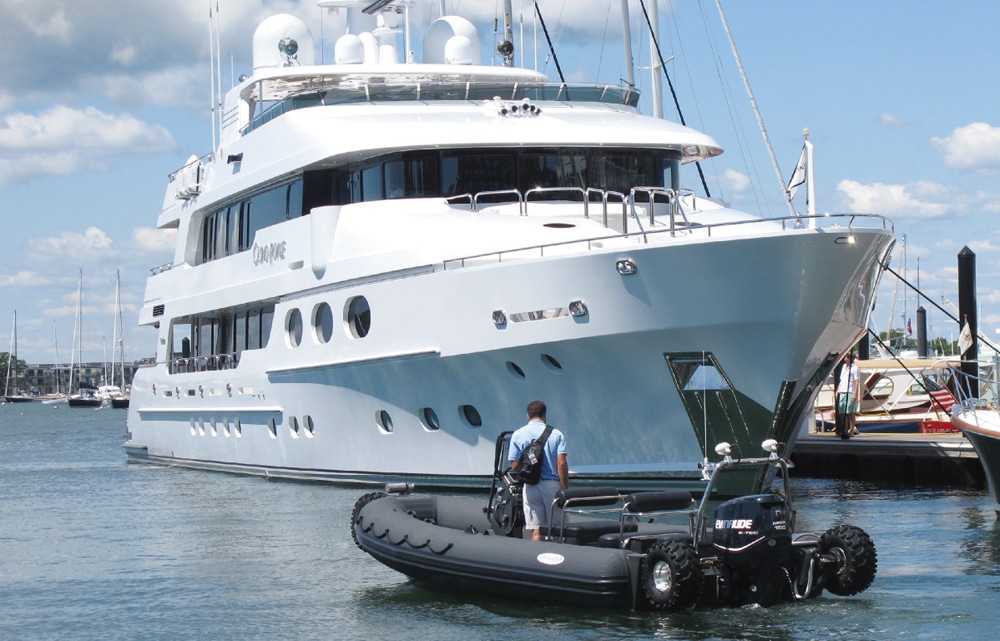
How to Choose a Tender
Tenders may just be the Rodney Dangerfields of the yachting world. They’re expected to start and run flawlessly on a moment’s notice and perform myriad tasks during a given trip — everything from ferrying passengers and gear to pulling kids on a wakeboard. And once someone owns a tender, he or she gives it the bare minimum of maintenance and care.
Disrespect notwithstanding, yachtsmen make more than their fair share of blunders when choosing a tender. Errors run the gamut from the wrong size vessel to improper propulsion to poor gear to material mistakes. We talked to the experts to ensure you’re better equipped when selecting your next tender — whether you respect the little boat or not is up to you. Here’s what we found. ** Measuring Up:** The first mistake people often make when choosing a tender is being lazy about taking measurements. They often don’t measure the space available on their boat or the height of the opening if the boat is to be stored in an enclosed area. Other dimensions should also be considered.
“It’s a much more technical sale than people expect,” said Skip Reisert, owner of Tender Care Boats in Fort Lauderdale, Florida ( www.tendercareboats.com ). “Someone tells a yacht owner he can fit a 13- foot tender on his boat, but it becomes 14½ feet as soon as he puts up the tilt on the outboard.”
Reisert and other dealers say that tender buyers often come in with the wrong size or even the incorrect brand in mind. It’s often recommended that a yacht owner have the company that installed the davits or hydraulic swim platform come to the boat to recommend a size for the tender.
While a tender might fit dimensionally, don’t forget about the possibility that it can restrict boarding access. If a boat with a beam of 14 feet has a transom door at about the 12-foot mark, having a 12-foot tender blocks that entryway.
You Get What You Pay For: If failing to measure is the first mistake people make during tender selection, being cheap or going too small is definitely the second. In many cases, the tender is one of the last decisions a person makes. Sometimes an owner doesn’t want to spend any more money, and other times he doesn’t want to have to make any more decisions, so he just takes the cheapest thing he comes across.
“There’s almost sticker shock when people see how much these boats cost,” said Jarrett Bryzek of International Yacht Network ( www.iynboats.com ).
Mission Possible: In addition to measuring, tender buyers need to think about how they’ll use the smaller boat. If it’s going to spend most of its time on the davit or swim platform and rarely be deployed, that’s one thing, but if you know that your tender is going to be in operation frequently, don’t just focus on price.
When a couple or family comes into his facility, the first thing Bryzek does is sit the wife down in a boat. “She says, ‘It’s too small. We can’t fit the kids and the luggage and the golden retriever.’” That way he doesn’t have to try to sell too hard. They see for themselves that they need to choose a boat that’s big enough to meet the requirements of their family.
Added Sunset Inflatables’ Mitch Bernardo of Huntington Beach, California, “I have to remind [owners] that once you get where you’re going, you’re going to spend all your time on your tender.”
Power Trip: With boat size addressed, the next likely mistake is the propulsion system, including the amount and type of power. Most owners want maximum power, which some dealers feel is just an American idiosyncrasy. Because fuel prices are higher in Europe, boaters on the other side of the Atlantic don’t automatically demand the biggest engine they can get.
The overpowering pandemic is especially rampant with new lightweight tenders such as those from Walker Bay and the Nano series by Nautico. On the 12-foot Widebody Nautico series, International Yacht Network recommends a 50-horsepower outboard, but the 12-footer in the Nano series is so much lighter that it needs only a 25-horsepower motor and planes in less time when so powered. On a 14-foot Nano with a towing arch, a 40-horsepower motor was actually faster than a 60-horsepower motor when tested because the bigger one weighed down the boat. Bernardo explained that putting the maximum-size motor on a boat might do more harm than good. “Put a 60-horsepower on a 14-foot tender and it’s well tempered,” he said. “Put on the 75 and the boat can become unruly.”
Conversely, underpowering a boat will make the engine work harder to ferry people back and forth between the mother vessel and shore. If you bought the tender because the dealer told you it has enough power to pull a wakeboarder and it can’t pull your kid up on a board, you’re going to hear about it from Junior.
Bernardo feels that a tender’s transom height also factors into how much power it should have, which makes sense. His rule is that a boat with a 20-inch-tall transom needs at least a 40-horsepower motor while a 12-foot or shorter boat with a 15-inch transom will work better with a 30-horsepower outboard.
If you’re not tied into a specific type of power based on the design of a boat’s garage (see “It’s Launch Time,” below), consider where you’ll be using the tender and what you want it to do when you select the propulsion. Jets are often faster, but they’re also no fun to drive at slow speeds and a little more difficult to get used to because there is no neutral. “You’re oversteering so much your arms are ready to fall off,” Bryzek said with a laugh. Additionally, most service technicians feel that they’re tougher to maintain than outboards or stern-drives. ** Material World:** Virtually all tenders on modern yachts are rigid-hull inflatables, and you need to know the differences in the materials that tubes are made from before making a selection. If you boat in the Northeast, Great Lakes or Pacific Northwest, you can buy a boat made with PVC tubes without worrying and save some money in the process. PVC is less expensive than hypalon, from which many RIB manufacturers make their tubes. If you live in or spend most of your time in a tropical climate, don’t buy PVC. It does not hold up well in strong sun and will cost you money in the long run.
It’s Launch Time: If your boat has a stern garage, certainly a popular design element on a new boat, you need to do a little homework. For example, Fairline doesn’t require it but strongly recommends a Williams jet RIB for its new Targa 50’s garage. If you’re looking for a new tender for a pre-owned yacht that you’ve recently purchased, don’t go to the dealer locked in on a specific tender because it might not be the best fit for your boat.
As with any purchase, a tender decision needs to be seriously considered. “The real key is giving some thought to what’s important,” Bernardo said. So is giving your tender some respect.
- More: Boat Ownership
- More Uncategorized

BoatUS Launches Online Advocacy Tool

Dock Danger

A Dream Fulfilled

3 America’s Cup Hashtags to Follow

For Yachts or Home, Teak Stands the Test of Time

Release Boatworks 43 Gameboat Reviewed

Viking Yachts 38 Billfish Reviewed

CL Yachts Unveils 100-foot CLX99 Flagship Design

- Digital Edition
- Customer Service
- Privacy Policy
- Email Newsletters
- Cruising World
- Sailing World
- Salt Water Sportsman
- Sport Fishing
- Wakeboarding
Choosing the right tender for your boat
Choosing the right tender for your boat is crucial to your safety and enjoyment while exploring the open sea with your family.
Choosing the Right Tender for Your Boat
Leaving the rat race behind and setting sail to explore the world with your family is an exciting and fulfilling journey. One of the essential aspects of this lifestyle is having the right equipment to ensure your safety, comfort, and enjoyment. One such piece of equipment is a tender or dinghy for your boat. In this article, we will discuss the various options available, their pros and cons, and how to choose the right tender for your needs.
Table of Contents
What is a tender, inflatable tenders, rigid inflatable boats (ribs), hard dinghies, folding and collapsible tenders, kayaks and paddleboards, size and weight, performance.
A tender, also known as a dinghy, is a small boat used to transport people and supplies between a larger boat and the shore. Tenders are essential for cruisers who anchor or moor their boats away from docks, as they provide a means of getting to and from land. They can also be used for various recreational activities, such as fishing, snorkeling, or exploring nearby islands and coves.
Types of Tenders
There are several types of tenders available, each with its own set of advantages and disadvantages. Let’s take a closer look at each type to help you determine which one is best suited for your needs.
Inflatable tenders are lightweight, easy to store, and relatively inexpensive. They are made from durable materials, such as PVC or Hypalon, and can be inflated and deflated as needed. Inflatable tenders come in various sizes and styles, including roll-up, air floor, and high-pressure inflatable floor models.
- Lightweight and easy to handle
- Compact when deflated, making storage simple
- Generally more affordable than other types of tenders
- Soft sides can prevent damage to the mothership when coming alongside
- Can be punctured or damaged by sharp objects
- May not perform as well in rough conditions
- Inflation and deflation can be time-consuming
Rigid Inflatable Boats (RIBs) combine the best features of inflatable tenders and hard dinghies. They have a rigid hull, usually made of fiberglass or aluminum, and inflatable tubes around the sides. This design provides excellent stability, performance, and durability while still being relatively lightweight and easy to handle.
- Excellent performance and stability in various conditions
- Durable and resistant to damage
- Can be used for a wide range of activities, including water sports
- Inflatable tubes provide a soft, forgiving surface when coming alongside the mothership
- More expensive than inflatable tenders
- Heavier and more challenging to handle than inflatable tenders
- Can be more challenging to store due to the rigid hull
Hard dinghies are made from materials such as fiberglass, aluminum, or rotomolded plastic. They are durable, stable, and can handle rough conditions better than inflatable tenders. Hard dinghies are available in various sizes and styles, including rowing dinghies, sailing dinghies, and motorized dinghies.
- Can be used for a wide range of activities, including sailing and rowing
- Low maintenance
- Can be more challenging to store due to their size and shape
- Can cause damage to the mothership when coming alongside if not handled carefully
Folding and collapsible tenders are designed to be easily stored when not in use. They can be made from various materials, including wood, aluminum, and plastic. Some models fold flat, while others have a collapsible hull that can be disassembled and reassembled as needed.
- Compact and easy to store
- Can be more durable than inflatable tenders
- Can be more expensive than other types of tenders
- Assembly and disassembly can be time-consuming
While not traditional tenders, kayaks and paddleboards can be used as an alternative means of transportation between your boat and the shore. They are lightweight, easy to store, and can be used for various recreational activities.
- Can be used for a wide range of activities, including exploring, fishing, and exercise
- Limited capacity for passengers and supplies
- May not be suitable for rough conditions
- Can be more challenging to board and disembark than traditional tenders
Factors to Consider When Choosing a Tender
When choosing a tender for your boat, there are several factors to consider, including size and weight, storage, capacity, performance, durability, and price.
The size and weight of your tender will affect its handling, storage, and performance. Consider the size of your boat and the available storage space when choosing a tender. Smaller, lighter tenders are easier to handle and store but may not perform as well in rough conditions or have the capacity to carry multiple passengers and supplies.
Consider how and where you will store your tender when not in use. Inflatable tenders and folding or collapsible tenders are the easiest to store, as they can be deflated or disassembled and stowed in a small space. Hard dinghies and RIBs may require davits or a dedicated storage area on deck.
The capacity of your tender will determine how many passengers and supplies it can carry. Consider your needs and the size of your crew when choosing a tender. If you plan to use your tender for activities such as fishing or snorkeling, you may also want to consider the available storage space for gear and equipment.
The performance of your tender will affect its ability to handle various conditions and perform tasks such as towing, water sports, or exploring. RIBs and hard dinghies generally offer the best performance, while inflatable tenders and kayaks or paddleboards may be more limited in their capabilities.
The durability of your tender is essential, as it will be exposed to various conditions and potential hazards, such as rocks, debris, and UV exposure. RIBs and hard dinghies are generally the most durable options, while inflatable tenders may be more susceptible to punctures and damage.
The price of your tender will depend on the type, size, and features you choose. Inflatable tenders are generally the most affordable option, while RIBs and hard dinghies can be more expensive. Consider your budget and the features that are most important to you when choosing a tender.
Choosing the right tender for your boat is an essential part of your cruising lifestyle. By considering factors such as size and weight, storage, capacity, performance, durability, and price, you can find the perfect tender to meet your needs and enhance your sailing adventures. Whether you choose an inflatable tender, RIB, hard dinghy, folding or collapsible tender, or even a kayak or paddleboard, the right tender will provide you with the freedom and flexibility to explore and enjoy your surroundings to the fullest.

- Center Consoles
- Dual Consoles
- Motoryachts
- Sport Cruisers
- Tenders & Ribs
- U.S. Atlantic
- Engine Buyers Guide
- Electronics
- Digital Edition
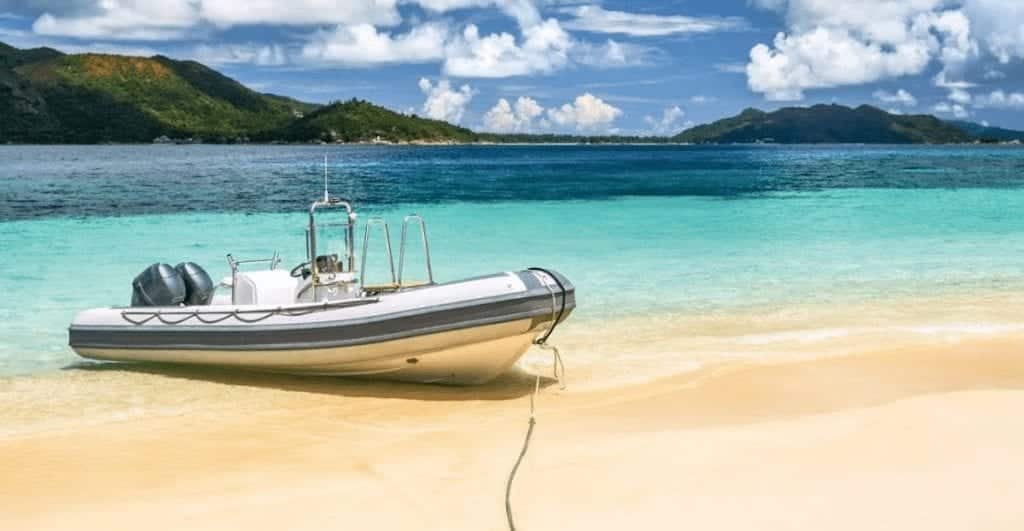
Top 15 Tenders and RIBS
Top 15 tenders and ribs, here’s a look at some of today’s top tender and rib builders and their models., zodiac pro 6.5.
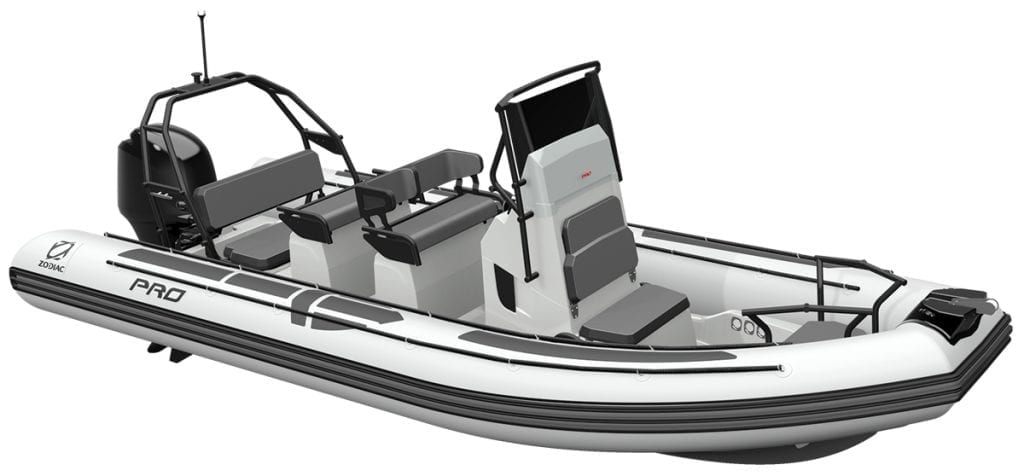
Achilles HB-315DX
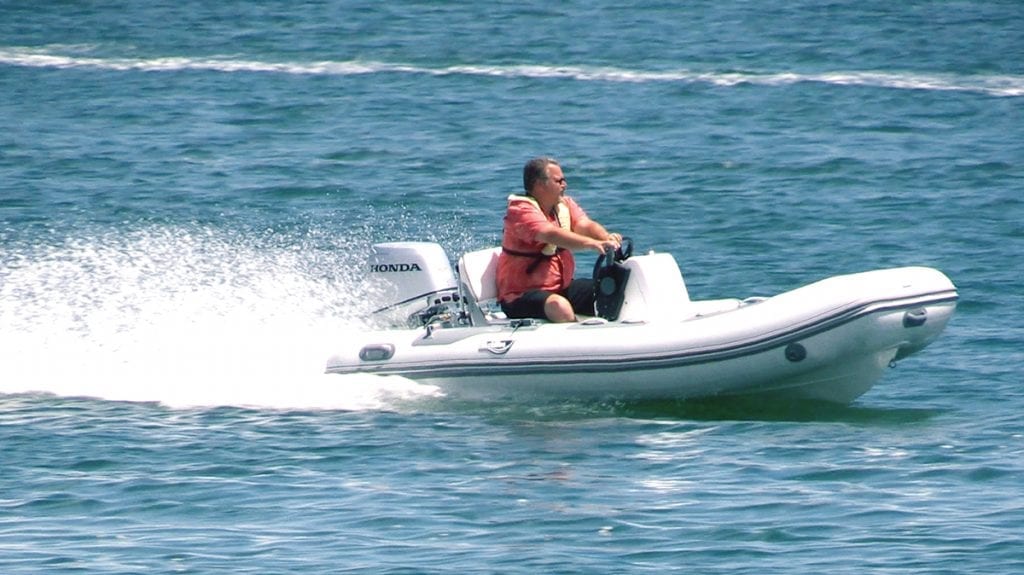
Airship 340
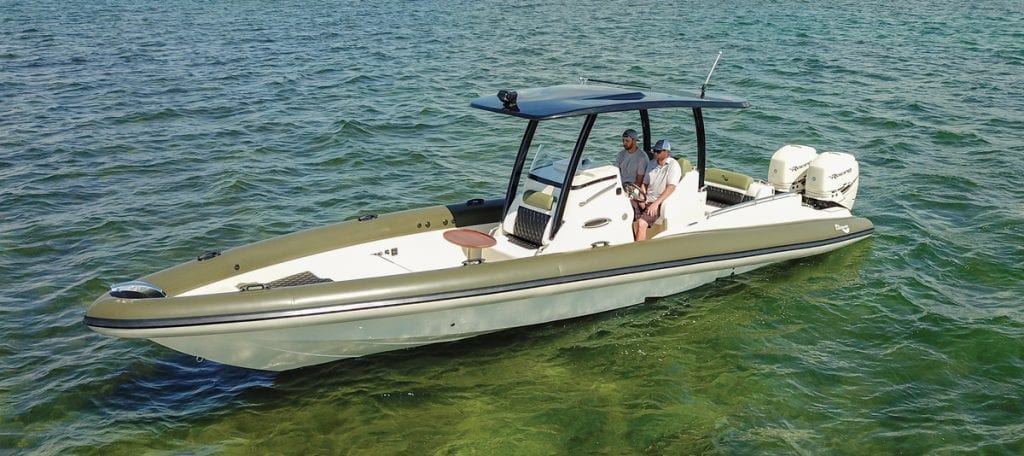
Hyfoil Foiling RIB 28
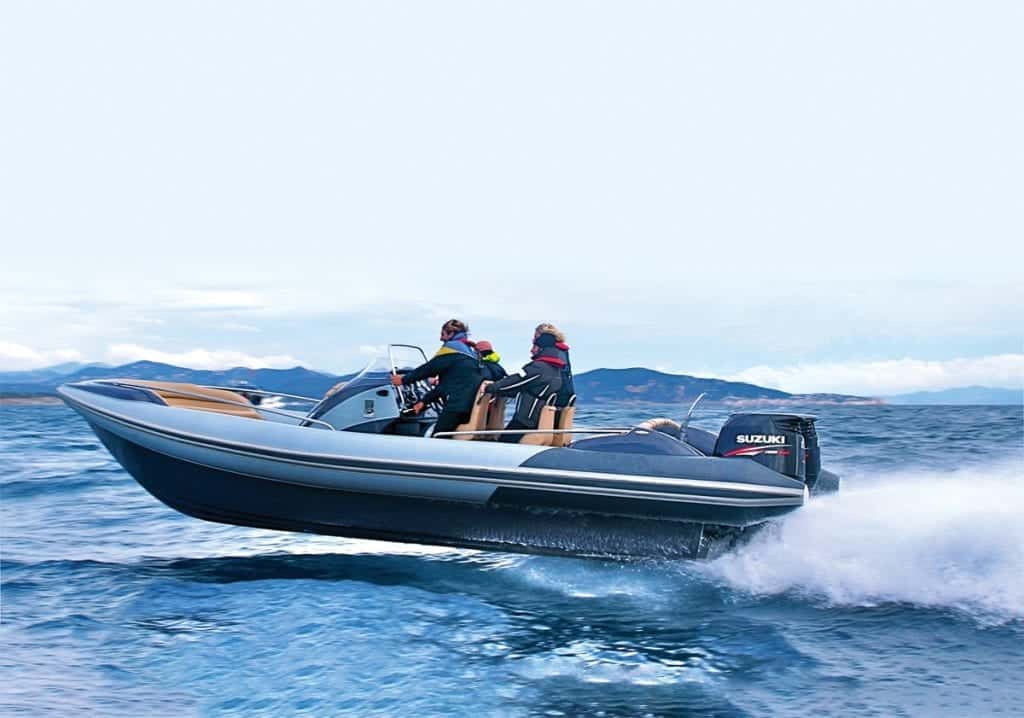
Argos Nautic 305 Yachting
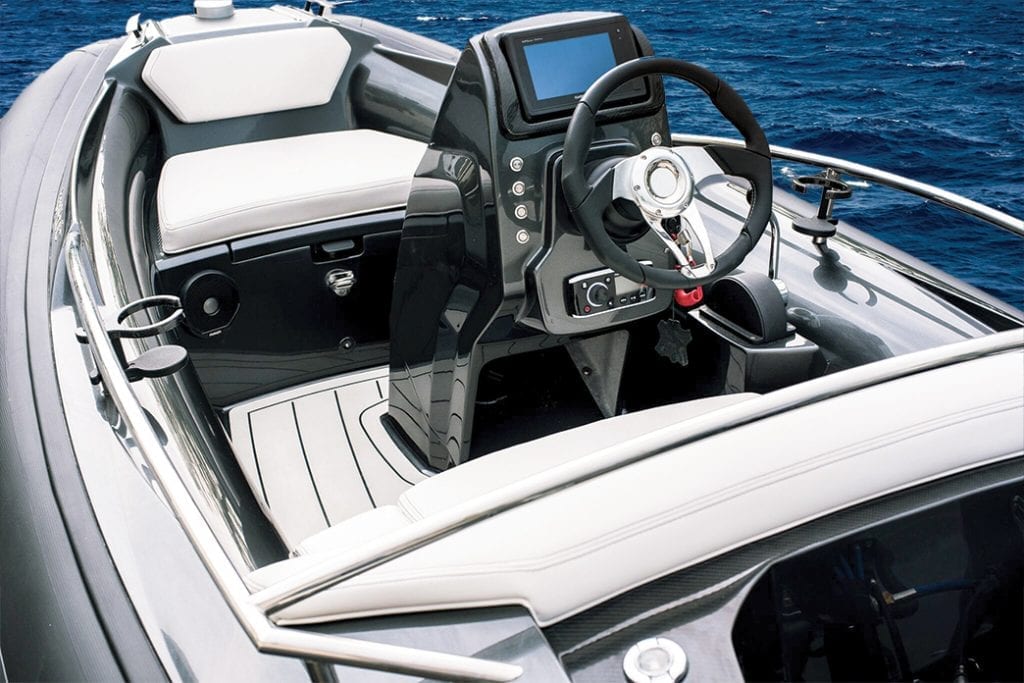
Avon Seasport 400 Deluxe
Caribe nautica dl11, highfield cldl360.
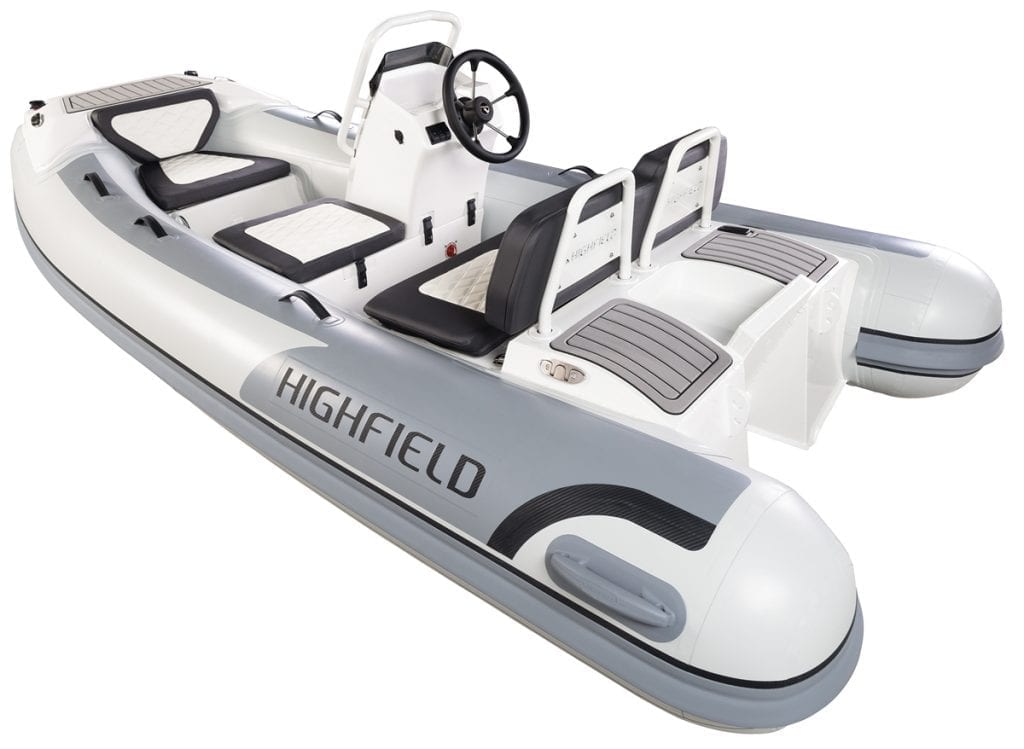
Mercury 320 Aluminium
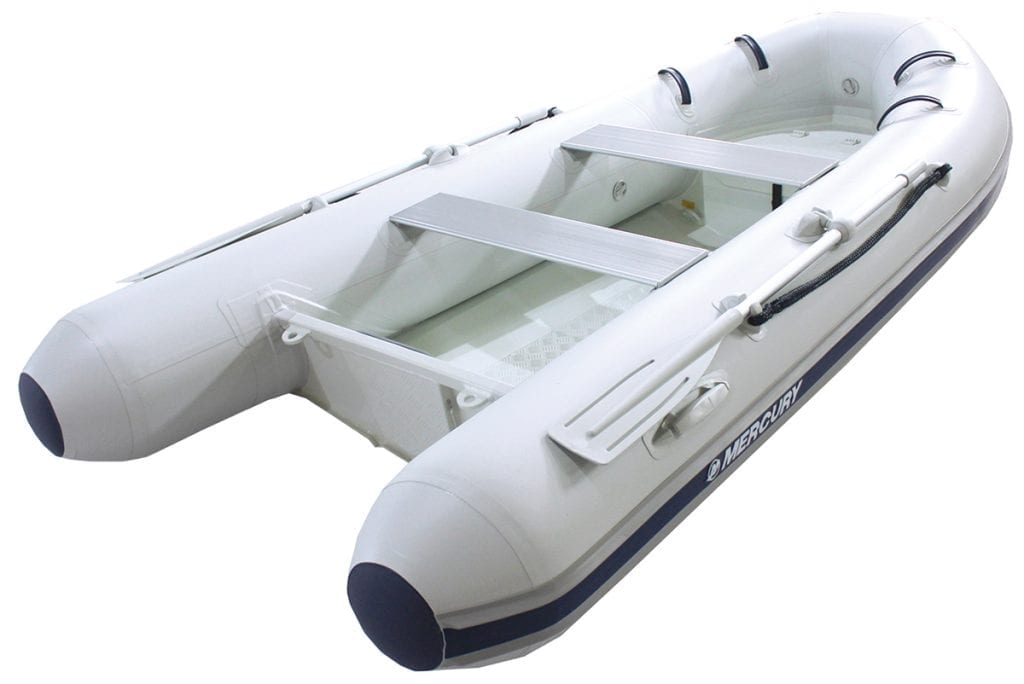
Technohull Omega 45
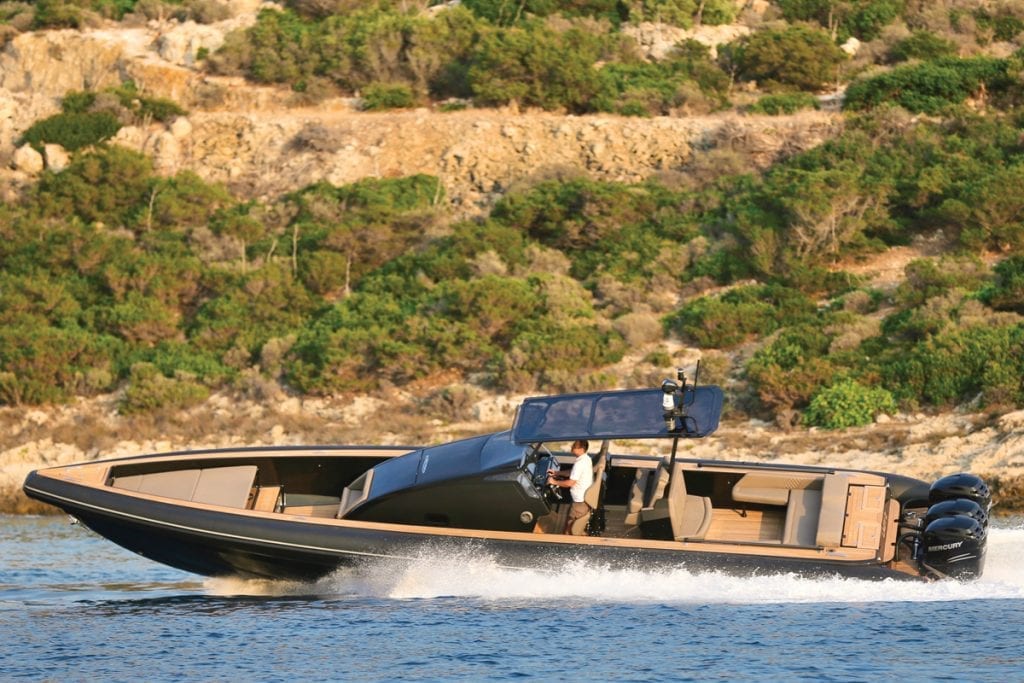
Ribcraft 5.85
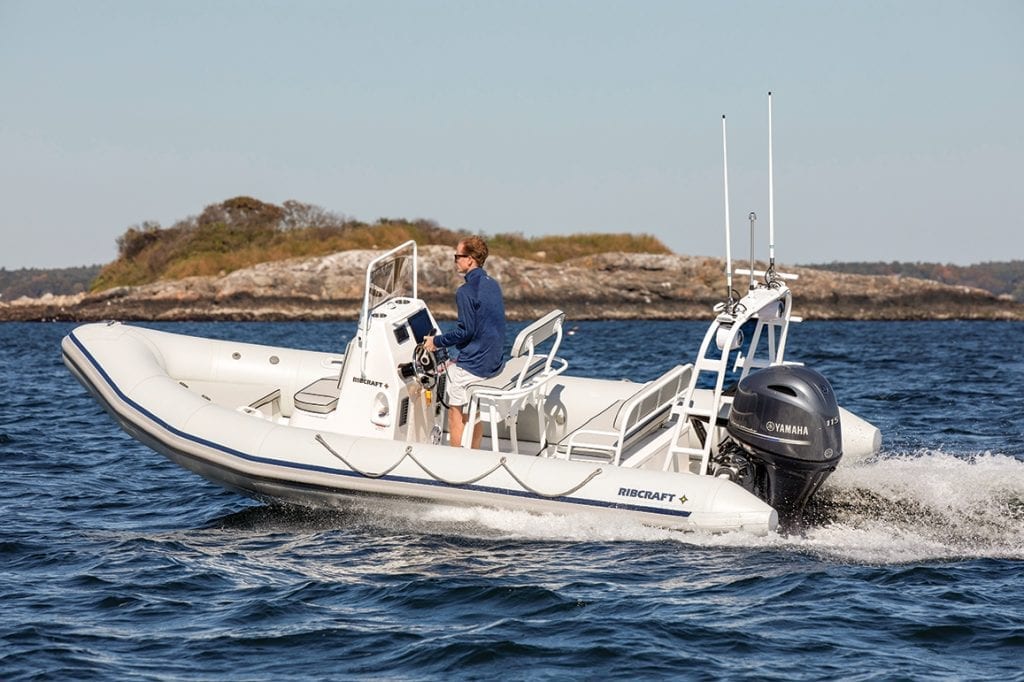
Sealegs Electric E4
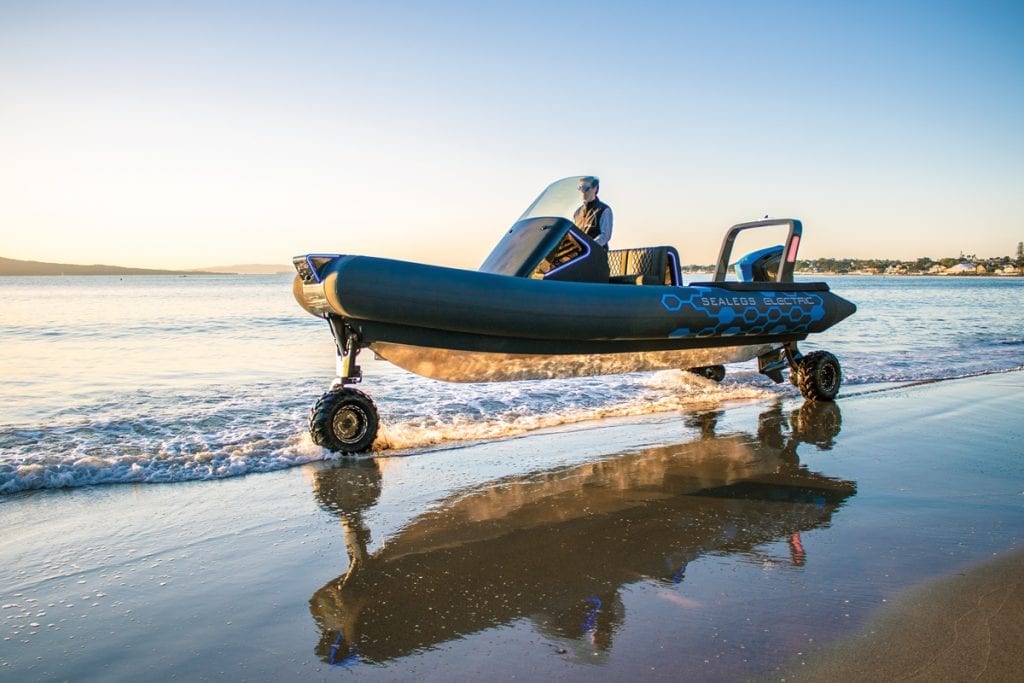
Walker Bay Venture 14
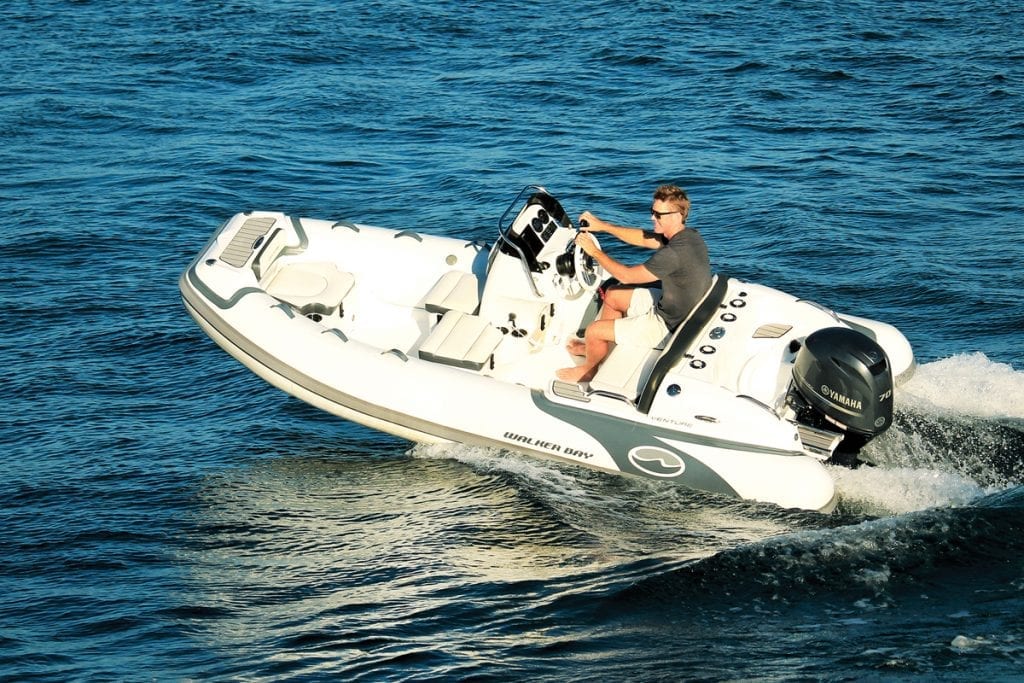

Williams Sportjet 435
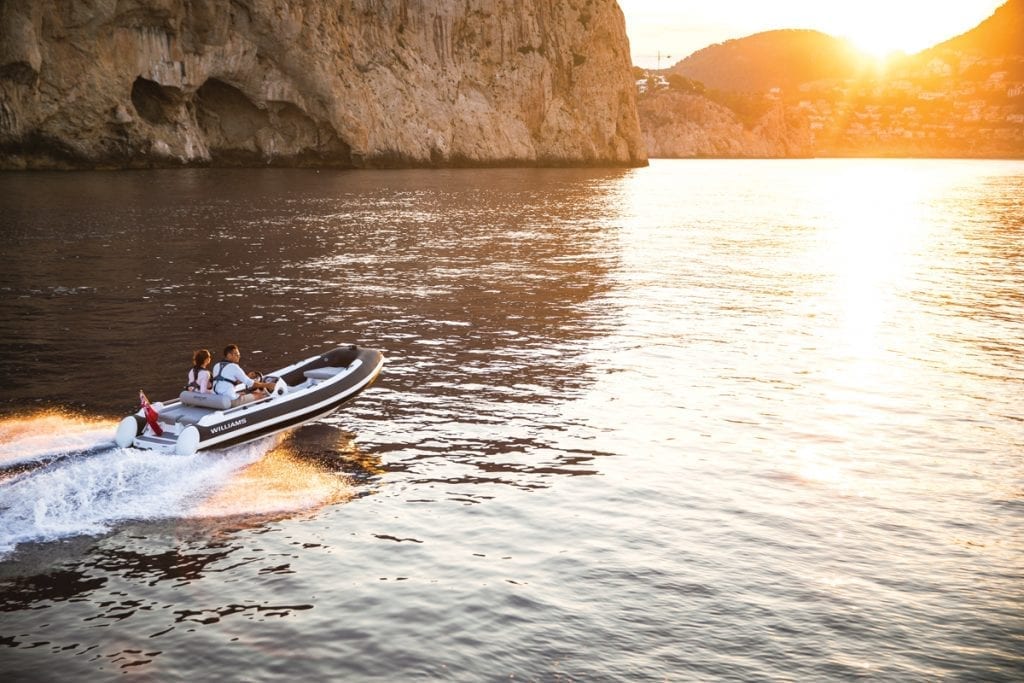
Seven Marine and Volvo Penta Partnership
Cheoy lee presents the cla 76f.
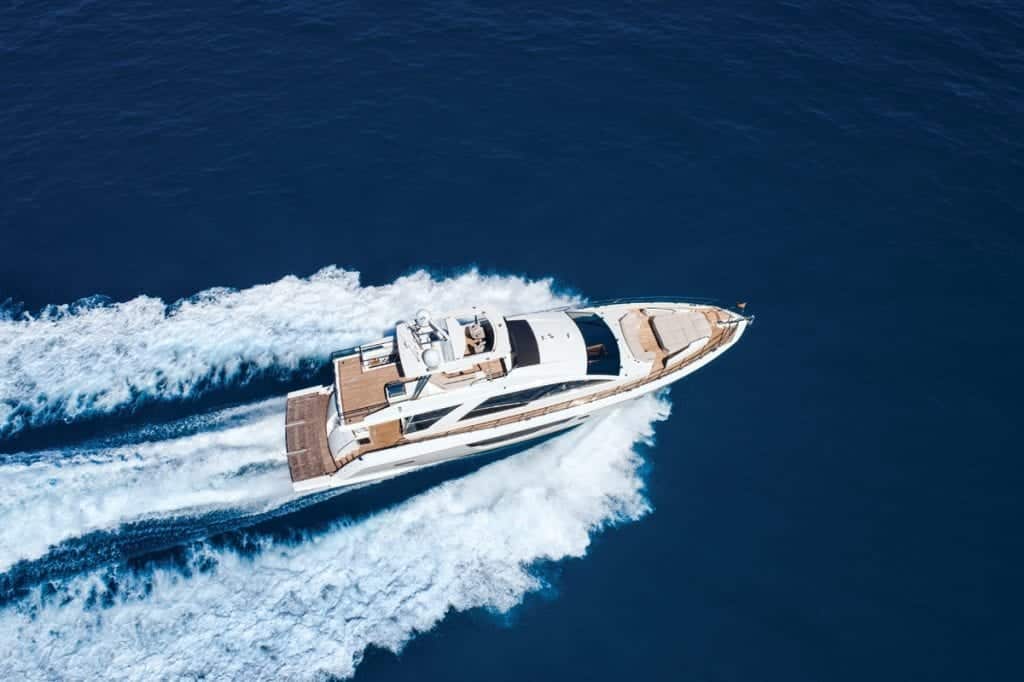
Recommended
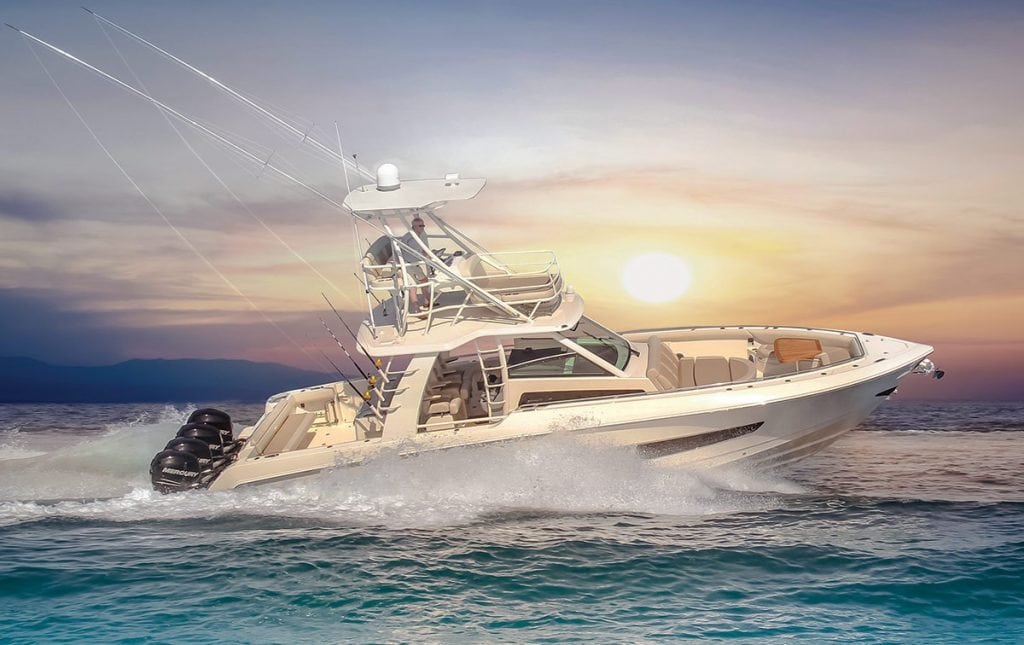
Boston Whaler 420
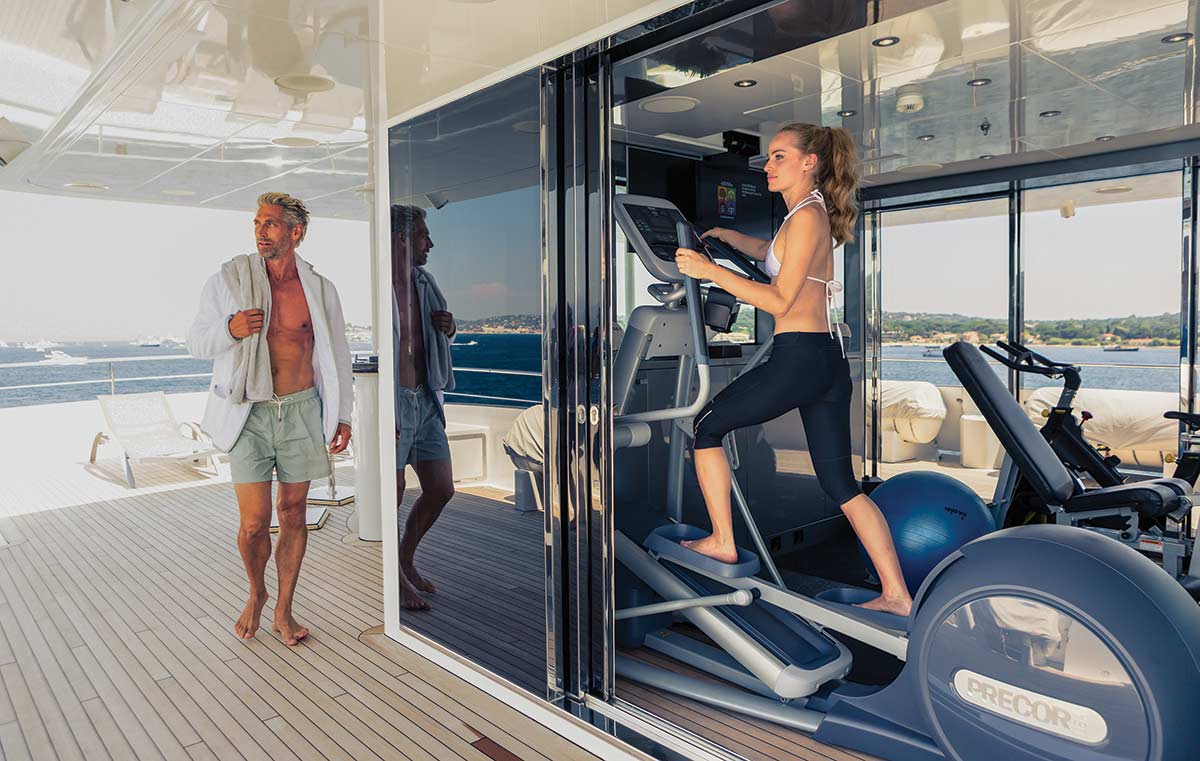
Booze Cruise Be Gone
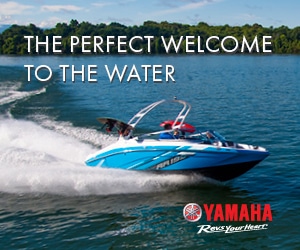
Don't miss it

Triumph Over Trials: Applauding The Crossing For Cystic Fibrosis

Tiara EX54 Yacht Review: Your New Elevated Experience

Useful, Efficient and Quiet: Horizon Powercats’ New Power Management System

Marlow Yachts Celebrates Owners with Its 26th Spring Rendezvous

Can The Bull Market Keep on Kicking?

You’ll Love the Latest Elite Sportfishing Yachts of 2024
- Privacy Policy

1591 E. Atlantic Blvd, 2nd Floor Pompano Beach, FL 33060 Office: +1 (954) 522-5515 Fax: +1 (954) 522-2260 Contact us: [email protected]
© 2024 Southern Boating Media
Dinghies & Tender Boats
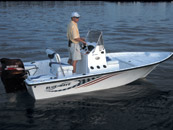
Join Our Newsletter!
Get community news, buying bargains, and how-to guides at your fingertips.
Tender vs Dinghy: Understanding the Key Differences
by Emma Sullivan | Aug 18, 2023 | Sailboat Gear and Equipment

Short answer: Tender vs Dinghy
A tender is a small boat used primarily for transport between a larger vessel and the shore, whereas a dinghy is a small boat typically used for recreational purposes or as a lifeboat. Tenders are usually designed with greater stability and carrying capacity for passengers and supplies, while dinghies prioritize maneuverability and ease of use.
Understanding the Tender vs Dinghy: A Comprehensive Comparison
When it comes to boating or yachting, having a vessel that allows for easy transportation between the shore and your main boat is essential. This is where the tender and dinghy come into play. Both serve as vessels used to transport people, supplies, or equipment from one point to another, but they each have their own unique characteristics and purposes. In this comprehensive comparison, we dive deep into understanding the differences between a tender and a dinghy.
1. Definition and Purpose: A tender refers to a small boat used to ferry passengers or goods from a larger vessel, such as a yacht, to land or vice versa. It is designed with comfort in mind, often equipped with plush seating and amenities that mirror those on the main boat. Tenders are primarily used for transporting people in style while maintaining an element of luxury.
On the other hand, a dinghy is typically known as a small utility boat that serves several purposes beyond passenger transportation. While it can certainly act as transport between larger boats and land, it is also commonly used for water sports activities like sailing, rowing, or fishing due to its lightweight construction and maneuverability.
2. Size Matters:
In terms of size, tenders are generally larger than dinghies because their purpose revolves around providing comfortable transfers for both passengers and crew members. They often range from 8 feet up to 40 feet in length (or even bigger), depending on the size of the main vessel they accompany.
Dinghies, on the other hand, tend to be smaller in size since their primary role is centered around utility rather than luxury. Ranging from 6 to 16 feet long (sometimes more), they are compact enough to be easily transported alongside a larger vessel without causing inconvenience.
3. Construction:
Tenders often feature a rigid hull made of materials like fiberglass or aluminum which provides stability during transportation. Some higher-end tenders may even have inflatable collars to enhance buoyancy and shock absorption.
Dinghies, conversely, come in two main types: rigid-hulled and inflatable. Rigid-hulled dinghies (RIBs) consist of a solid material like fiberglass or aluminum for the hull with inflatable tubes providing added buoyancy. Inflatable dinghies, as the name suggests, are entirely inflatable and can be easily folded or deflated for convenient storage.
4. Propulsion:
Tenders typically employ more powerful engines since they may need to transport larger groups of people or heavier equipment. These engines could range from inboard motors to outboard motors, ensuring smooth and efficient transfers regardless of weather conditions.
Dinghies traditionally use smaller engines due to their lightweight nature and versatility in water sports activities. Their propulsion systems often consist of outboard motors attached to the transom for easy maneuverability and quick acceleration.
5. Pricing:
As expected with their added luxury features, tenders usually come at a higher price point compared to dinghies. The cost is influenced by factors such as size, materials used, engine power, and additional amenities provided onboard.
Dinghies score economically here as their primary purpose revolves around utility rather than opulence. The price tags on these compact vessels are generally lower compared to tenders but can still vary depending on features such as hull materials, propulsion systems, and any added accessories.
In conclusion, understanding the tender vs dinghy comparison is crucial when deciding which vessel best suits your boating needs. If you prioritize comfort, style, and seamless transportation between your main boat and land destinations with an extra touch of luxury; a tender would undoubtedly be your ideal choice. However, if you seek versatility for water sports activities along with basic transport capabilities – accompanied by a more budget-friendly option – then a dinghy should definitely be on your radar!
How to Differentiate Between a Tender and a Dinghy: Step-by-Step Guide
When it comes to boating, there are many terms that can often be confusing – especially if you’re new to the scene. One question that frequently pops up is: What is the difference between a tender and a dinghy? Well, fear not! We’re here to provide you with a step-by-step guide on how to differentiate between these two nautical terms.
First things first, let’s clarify what each term actually means. A tender refers to a small boat used for transportation between a larger vessel and the shore or other boats. On the other hand, a dinghy is simply a small open boat that is often used as either a recreational craft or as transport for short distances.
Now that we’ve got some basic definitions under our belt, let’s dive deeper into distinguishing features:
1. Size Matters: One of the most fundamental differences between tenders and dinghies lies in their size. Tenders generally tend to be larger than dinghies and are specifically designed to accommodate multiple people comfortably, along with additional equipment such as oars or an outboard motor . Dinghies, on the contrary, are usually smaller in size and generally intended for solo use or carrying only one or two passengers.
2. Construction: While both tenders and dinghies can be made from various materials like fiberglass or aluminum, traditional dinghies often have inflatable tubes (known as pontoons) enabling them to float even when filled with water. This design feature makes them incredibly stable in choppy waters compared to non-inflatable tenders.
3. Purpose: Another key factor separating these two vessels is their intended purpose. Tenders primarily serve as auxiliary boats for larger vessels – think of them as floating shuttles that ferry people, supplies, or even equipment back and forth from land or other boats anchored nearby. Dinghies, however, are more focused on recreational activities such as fishing trips, exploring shallow waters, or simply joyriding. They are not exclusively tied to a parent vessel and can be used independently.
4. Seating and Accessories: When comparing tenders to dinghies, it’s essential to consider the available seating options and additional accessories they offer. Tenders usually come equipped with multiple seats, often padded for better comfort during longer journeys. Additionally, they may feature storage compartments for stowing gear or even built-in fixtures like oar locks or towing rings for easy maneuvering. Dinghies typically have less seating space since they are designed to accommodate fewer passengers and generally lack additional features found in larger tenders.
5. Nomenclature: Interestingly enough, sometimes the difference between a tender and a dinghy could simply be a matter of semantics within certain boating circles. Some people might use both terms interchangeably depending on their specific context or personal preference – so always remember that context matters!
In conclusion, differentiating between tenders and dinghies boils down to various factors such as size, construction, purpose, seating arrangements, and individual definitions employed by boaters themselves. By considering these elements carefully, you’ll be able to navigate the sometimes murky waters of boat terminology with ease.
So there you have it – our step-by-step guide on how to differentiate between a tender and a dinghy! Armed with this knowledge, you’ll impress your fellow boaters with your newfound ability to identify each vessel correctly. Now go forth (or should we say float forth?) confidently into the world of boats !
Tender vs Dinghy: Unveiling the Key Differences and Similarities
When it comes to boating, choosing the right vessel is crucial. Whether you’re a seasoned sailor or a novice on the water, understanding the differences and similarities between tenders and dinghies is essential. In this blog post, we will dive deep into these two types of boats, unraveling their key distinctions and highlighting their commonalities.
Firstly, let’s address what precisely tender and dinghy mean in the context of boating terminology . A tender is a smaller boat employed primarily to transport people or goods between a larger vessel (such as a yacht) and shore. On the other hand, a dinghy is an open boat typically used for recreational purposes like rowing or sailing.
One of the primary differences between tenders and dinghies lies in their intended purpose. While both vessels serve as means of transportation in some form or another, tenders are specifically designed to cater to larger boats . Tenders enable passengers or necessities to shuttle back and forth from the main vessel to land. They often feature more advanced features like comfortable seating arrangements and weather protection measures.
In contrast, dinghies are primarily focused on individual enjoyment rather than practicality for larger vessels. Dinghies are commonly found in sizes ranging from 6ft up to around 14ft long. They can be rowed, sailed with minimal equipment (such as a small sail), or powered by an outboard engine. These agile little boats offer riders an exciting experience exploring waterways close to shorelines.
Another significant distinction lies in their build characteristics . Tenders are usually sturdier than dinghies due to their typical use on open waters away from land for longer durations. Their construction materials may include durable components such as fiberglass hulls that withstand rough conditions encountered while transporting passengers or items.
Dinghies come in various forms depending on their intended purpose; however, many are built using lighter materials like aluminum or inflatable tubes. Choosing the right material for a dinghy largely depends on factors such as portability, ease of storage, and recreational activities planned.
Despite these key differences, there are also noteworthy similarities between tenders and dinghies. One common aspect is their versatility. Both can adapt to different water situations, whether it’s calm lakes or more challenging sea conditions . This adaptability allows users to explore various waterscapes with confidence.
Moreover, both tenders and dinghies possess excellent maneuverability capabilities. Whether you’re using oars to row a dinghy or utilizing an outboard engine on a tender, navigating through tight spaces or congested harbors becomes hassle-free with these agile boats.
Finally, both vessels offer ample opportunities for customization and personalization . From adding comfortable seating options to equipping them with navigation systems or even fishing accessories, boat owners have the freedom to tailor their tender or dinghy to suit their individual needs and preferences.
In conclusion, understanding the distinctions between tenders and dinghies helps boating enthusiasts make informed decisions when embarking on water adventures. Tenders serve as practical transportation solutions for larger vessels while offering enhanced features for passenger comfort. On the other hand, dinghies provide individual enjoyment through rowing or sailing experiences closer to shorelines. Despite their differences, both boats exhibit versatility, maneuverability, and customizability that add value to any boating experience. Choose wisely and set sail with confidence!
Your Burning Questions Answered: FAQs about Tender vs Dinghy
Welcome to our blog series where we aim to address your burning questions about various boating topics. In this edition, we delve into the frequently asked questions regarding a tender versus a dinghy, two common vessels used for different purposes. So let’s dive straight in and satisfy your curiosity with detailed, professional yet witty and clever explanations.
1. What is the difference between a tender and a dinghy? – A tender refers to a vessel primarily used for transportation between a larger boat or yacht and the shore. It often has a more refined appearance, resembling its parent vessel in design and style. On the other hand, a dinghy is typically an open small boat that can be used independently from the main vessel for various activities such as fishing, exploring shallow waters or water sports.
2. Why would I need a tender? – Ahoy! Having a tender provides great convenience when you want to go ashore from your larger boat without having to maneuver it through potentially tricky waters or crowded marinas. It grants you access to shoreside amenities, restaurants, and attractions with ease.
3. Can’t I just use my dinghy as a tender? – While you could technically use your dinghy as a means of getting ashore, using it solely for that purpose might limit its potential uses. Dinghies are versatile boats that can accommodate several recreational activities like fishing or frolicking around in shallow coves independently without relying on your main vessel.
4. Are tenders only for luxurious yachts ? – Not at all! Though commonly associated with high-end yachts due to their matching appearance and style, tenders come in various sizes suitable for different types of boats and budgets. Even if you have a modest-sized sailboat or motor cruiser , investing in an appropriately sized tender can greatly enhance your boating experience.
5. Are dinghies inferior to tenders ? – Absolutely not! Both tenders and dinghies serve different purposes, and neither is superior to the other. Dinghies excel in their versatility and independence, making them perfect for adventurers seeking a range of recreational activities. Tenders, on the other hand, prioritize comfort and convenience when moving between the large vessel and shore.
6. Can I customize my tender or dinghy? – Certainly! One of the great joys of owning either type of boat is that you can personalize it to your heart’s content. Whether you want to add plush seating and elegant finishes to your tender or outfit your dinghy with fishing accessories or water sports equipment, there are endless possibilities for customization.
7. How do I choose between a tender and a dinghy? – The choice ultimately depends on your boating preferences and needs. Consider factors such as intended use, budget, storage space on your main vessel, number of passengers you intend to transport, and desired level of comfort versus versatility. Assessing these aspects will help guide you towards selecting the ideal boat for your specific requirements .
We hope these answers have shed some light on the frequently asked questions regarding tenders versus dinghies. Remember, both vessels offer unique advantages based on their individual strengths. So whether you’re cruising in luxury aboard a yacht or embarking on thrilling adventures with a smaller boat by your side, happy boating!
Exploring the Purpose and Usage of Tenders and Dinghies: What Sets Them Apart?
When it comes to boats, most people tend to think of grand vessels cruising through the open waters. However, not every boating experience requires such extravagance. Sometimes, a smaller and more versatile option is needed for various purposes. This is where tenders and dinghies come into play.
Tenders and dinghies are both small boats that serve different purposes on the water. While they may share some similarities in appearance, it’s important to understand their distinctions in order to make an informed choice for your boating adventures . So, let’s dive in and explore the purpose and usage of tenders and dinghies while unraveling what truly sets them apart.
Firstly, let’s take a closer look at tenders. These are specially designed inflatable or rigid-hulled boats that act as a companion boat to larger vessels like yachts or superyachts. Tenders function as transportation between the shore and the main vessel when anchoring offshore or when navigating shallow waters inaccessible by larger crafts. They typically have ample space for passengers, equipment, supplies, or even water sports activities like wakeboarding or snorkeling gear.
Tenders are incredibly versatile due to their ability to be easily stowed on board larger vessels without taking up much space. Their inflatable nature allows them to be deflated when not in use, making them compact enough for storage in lockers or other dedicated spaces on a yacht. Additionally, their maneuverability enables easy access to confined spaces, giving owners the freedom to explore secluded coves or access marinas with limited docking facilities.
On the other hand, dinghies differ from tenders primarily in terms of functionality and usage. Dinghies are small rowing boats that can either be powered by oars alone or equipped with small outboard engines for added convenience. Unlike tenders that are specifically designed as companions for larger vessels, dinghies often serve as stand-alone craft suitable for various leisure activities.
Dinghies are commonly used for fishing, recreational rowing, or simply as a means of transportation when anchored close to shore. They offer an affordable and easily transportable option for those who wish to explore nearby waters independently. Their lightweight and compact nature make them ideal for individuals or small groups looking for an intimate boating experience without the need for additional amenities or accommodations.
Although tenders and dinghies have their distinctive uses, there may be some overlap in functionality depending on individual preferences and the specific design of each boat. Some larger tenders may incorporate rowing capabilities similar to dinghies, while certain dinghies may provide space for limited equipment like coolers or small outboard engines. It’s essential to consider your intended purpose before making a decision.
To sum it up, tenders and dinghies play vital roles in the boating world by offering versatile options that suit various needs. While tenders are primarily companions to larger vessels, providing transportation and access to remote locations, dinghies serve as stand-alone craft for leisure activities such as fishing or exploration of nearby waters . Owning either one can enhance your boating experience significantly by expanding your opportunities on the water.
So whether you’re cruising through coastal destinations aboard a luxurious yacht or prefer a more independent adventure closer to shore with a trusty dinghy, both tenders and dinghies have their unique advantages that set them apart in their purpose and usage – giving all boaters the perfect vessel tailored to their specific preferences.
Choosing Between Tender or Dinghy: Factors to Consider for Boating Enthusiasts
When it comes to boating, having the right vessel is crucial. Whether you are a seasoned sailor or a novice boater, one important decision you will have to make is choosing between a tender and a dinghy. While both options serve as auxiliary boats, each has its own set of factors that should be carefully considered before making a decision.
Firstly, let’s clarify what exactly a tender and a dinghy are. A tender is typically larger in size and is designed to transport people or supplies from shore to a larger boat (like a yacht). On the other hand, a dinghy is smaller and more versatile, often used for recreational purposes such as fishing or exploring shallow waters .
Size Matters: One of the key factors to consider when choosing between these two options is the size of your main vessel. If you have a larger boat that requires transportation for numerous people or heavy equipment, a tender would be the practical choice due to its increased carrying capacity. However, if your main boat is smaller and space efficiency is important, then opting for a compact dinghy would be more suitable.
Versatility vs. Practicality: Another aspect worth contemplating is how you plan on using your auxiliary boat. If your primary goal involves leisurely activities like fishing or cruising around secluded coves, then a dinghy might just fulfill all your dreams. They are nimbler in nature and can navigate through tight spaces with ease while providing an intimate and adventurous experience.
On the contrary, if you envision using your secondary vessel solely for transportation purposes or frequently traveling long distances from shore to your main ship – practicality takes precedence over versatility. This makes the tender an ideal choice as its spaciousness allows for comfortable seating arrangements while still accommodating essential supplies needed during longer journeys.
Power Preferences: It’s vital not to overlook power requirements when debating between these two vessel types. Tenders generally offer more horsepower options thanks to their bigger engines which can deliver greater speed and carry substantial loads. If you have a need for speed or venture into choppy waters, then the tender’s power advantage might be hard to resist.
However, if fuel efficiency and ease of maintenance are important factors for you, opting for a dinghy with a smaller motor might be the prudent decision. Their lightweight construction allows them to glide gracefully across calm waters while being more economically friendly.
Storage and Transport: As any experienced boater knows, storage space is valuable real estate onboard. When contemplating between a tender or dinghy, you must consider how much space you are willing to sacrifice when stowing it away on your main vessel. Tenders often require designated davits or cranes for secure lifting and storage due to their larger size. If you have limited storage capacity available, this could prove challenging.
On the other hand, dinghies shine in terms of compactness and portability. Many can be easily deflated and rolled up into small packages that can fit snugly into lockers or even carried ashore if necessary. Their lightweight design makes it hassle-free to transport them from land to sea without requiring additional equipment.
Overall Aesthetics: Lastly but significantly, aesthetics play an important role in boating as well. The choice between a tender and dinghy can greatly impact the overall aesthetic appeal of your boat setup. Tenders tend to have sleeker designs with luxurious finishes that seamlessly match larger vessels’ profiles – enhancing the overall visual appeal.
In contrast, dinghies may come in more varied designs suited towards specific activities such as fishing or water sports enthusiasts . They offer the opportunity to add some personal flair through customization options like vibrant colors or artwork – reflecting your own unique style on the open waters .
In conclusion, choosing between a tender or a dinghy boils down to carefully considering several factors including size compatibility with your main vessel, intended usage (versatility versus practicality), preferred power requirements, storage limitations, and desired aesthetics. Weighing these aspects against your personal boating preferences and needs will allow you to make an informed decision that ensures years of enjoyable experiences out on the water.
Recent Posts

- Sailboat Gear and Equipment
- Sailboat Lifestyle
- Sailboat Maintenance
- Sailboat Racing
- Sailboat Tips and Tricks
- Sailboat Types
- Sailing Adventures
- Sailing Destinations
- Sailing Safety
- Sailing Techniques
- 672 Wine Club
- Motorcycles
- Car of the Month
- Destinations
- Men’s Fashion
- Watch Collector
- Art & Collectibles
- Vacation Homes
- Celebrity Homes
- New Construction
- Home Design
- Electronics
- Fine Dining
- Dubai Tourism
- Gateway Bronco
- On Location – Olympic Games Paris 2024
- One&Only
- The Ritz-Carlton, Kapalua
- Saratoga Spring Water
- Sports & Leisure
- Health & Wellness
- Best of the Best
- The Ultimate Gift Guide
11 Tenders That Might Be Even More Fun Than Your Superyacht
These tenders range from a classic wooden aquarama to limousine models to advanced electric hydro-foilers., julia zaltzman, julia zaltzman's most recent stories.
- This Boatmaker Builds 1960s-Inspired Cruisers With a Modern Twist. Here’s How.
- This 150-Foot Fishing Trawler Was Transformed Into a Rugged Explorer Yacht
- These 3 Miniature Explorer Yachts Are Ready to Take You Off-Grid
- Share This Article

About 60 tenders of all stripes and sizes were on display at last month’s Monaco Yacht Show , from Novamarine’s Black Shiver 160, stretching 56 feet in length (too large for most superyachts to carry on board) to the small 26-foot Lanéva Dayboat, built for performance with a responsive, electric drivetrain.
These days, most superyachts over 120 feet carry at least two tenders on board. Twenty years ago, when the average superyacht size was closer to 80 feet, that would’ve meant a RIB for the crew and a Boston Whaler for guests. Today, it’s not uncommon for gigayachts over 250 feet to have much larger, elaborate limousine tenders with a roof that slides over the cabin, an open sports tender for convenience, and even a Zodiac for heading into remote regions.
The 303-foot Tatoosh , built by Nobiskrug in 2000, was among the first yachts with a deck that carries two 39-foot tenders: a Hinckley motoryacht and a Frers daysailer. It also holds three other tenders, a safety boat and four Sea-Doos. Meanwhile, the 296-foot classic yacht Nero , also on display last month at the Monaco show, brings glamor to any occasion with its custom-built wooden Corsair tender. At the futuristic end, America’s Cup Emirates Team New Zealand last year launched a hydrogen-fuel-celled tender, Chase 0 , to show that emissions-free hydrogen fuel cells could be a viable alternative to fossil fuels.
“Many superyacht owners and project managers are looking to tender manufacturers to bridge the gap between performance and ocean preservation,” Mark Pascoe, founder of Falcon Tenders, told Robb Report, noting the company uses the latest hybrid and electric propulsion in its tenders. Sustainability is indeed a big theme for tender manufacturers, and many new electric runabout builders are out to convince yacht owners that they can offer the same performance and comfort as a conventional tender, but without the emissions.
In the end, however, there are really just two types of tenders: Those designed to fit into a yacht’s garage, or those that serve as shuttles from the owner’s home port to the mothership.
That means styles and sizes are very much up to the owners. Here are 10 of our favorites, from the Tyde electric hydro-foiler to Riva’s iconic mahogany Aquarama.
Hodgdon Limousine

Heading for a shipyard in Northern Europe to be paired with a superyacht, Hodgdon’s new Limousine has accommodations for up 15, with both forward and aft outside seating areas, a wetbar, climate-controlled interior and a T-top that lowers for when the tender is stowed in the yacht’s garage. It also has gyro stabilizers to minimize motion sickness. The Michael Peters’ design looks more like a Downeast express cruiser than a traditional limo. The deep-V hull is fast and designed for stability in rough water, while the twin Volvo D4-320 engines deliver speed when necessary. The Maine shipyard’s dedication to quality is seen throughout the yacht, including the stainless on the exterior and custom upholstery inside. Even the Hodgdon signature flush anchor is custom fabricated.
Compass Limousine for Oceanco ‘H3’

Custom-built for the 344-foot Oceanco H3 (ex-Al Mirqab and listed among the 25 largest yachts in the world) this 36-foot limousine bears subtle styling characteristics taken from the mothership’s exterior design, including the window shape and hard-top detailing. The cabin features custom leather seating, stainless-steel trim, leather paneling, and a geometric teak floor. There is also an integrated AV system, ambient lighting and forward-facing cameras that display the tender’s journey on twin screens. Access to the cabin is through sliding glass doors fore and aft, while an electric sliding-glass roof opens the interior to the outdoors.
Falcon Project KD

Making its world debut in Monaco last month was Project KD from British builder Falcon Tenders . The custom 32-foot limousine tender was commissioned by the owner of a 210-foot Sanlorenzo yacht due to deliver next year. The fully finished exterior has fiber-optic light lines by Fibr8, powered by lasers to evenly emit light over long distances. The interior design remains under wraps until the unveiling next year. But if Falcon’s recent tenders, the Miss Wonderly and Miss Le Blanc, are anything to go by, the quality of build as well as features like the leather upholstery with its intricate hand-stitched seams, will make Project KD a tender worth waiting to see.
Brabus Shadow 300

Available in two models—a Cross-Bow or Cross-Top—the Brabus Shadow 300 is designed with powerboat enthusiasts in mind. Agile and easy to handle, the 25-foot sportster makes a good superyacht tender. The top speed of 50 knots, thanks to a Mercury 300R V8 racing engine, assures swift passage from the yacht to port. It’s also a great boat for watersports since it’s fitted with a pole for water-skiing, inflatable towing and wakeboarding. Not big enough? Its 38-foot Shadow 900 Black Ops Boat certainly provides a larger and very different look.
J-Craft Torpedo ‘BaBeBi’

Turning heads at both Cannes and Monaco this year was J-Craft’s 42-foot Torpedo BaBeBi . The Swedish builder’s first Torpedo with a metallic-colored hull sports a beautiful brass and off-white interior enhanced by diamond stitching. It’s twinned with serious functionality, capable of sailing in open water and certified to withstand 13-foot waves. Taking over 9,000 man-hours to build and fitted with two Volvo Penta IPS 650s, BaBeBi delivers a top speed of 47 knots. Equipped with lithium batteries for a full day on the water with the engines off, it has a 280-nautical mile range, a convertible open cockpit with two sundecks, and sleeps up to four guests for weekend retreats.
Cockwells ‘Titian ‘Tender

The custom 34-foot Titian tender built by U.K.-based Cockwells is equipped with old-school features like specially cast stainless-steel fittings on the exterior and a Corian and copper galley belowdecks. Its advanced electronics include a virtual anchor and touchscreen digital switching system. Powered by a highly maneuverable twin jet drive, the Titian played a starring role in fashion brand Michael Kors’s 2022 advertising campaign called ‘The Thrill of the Chase’, which saw Bella Hadid aboard the tender on London’s River Thames with Alton Mason in hot pursuit. Finished to superyacht quality standards, Titian won the “Pre-1980s” category of the Concours d’Elégance at last year’s Cannes Yachting Festival. Cockwells also has other mutliple designs under its sleeve. It recently showed a 39-foot hydrofoil limousine that can theoretically cruise at 40 knots.
Riva Aquarama

No tender round-up is complete without mentioning the Riva Aquarama —the most famous of all Carlo Riva’s designs. The Italian builder’s iconic luxury wooden runabout saw a limited run of 281 Aquarama Normals and Supers between 1962 and 1972, when Riva still owned the shipyard, and then 277 more, called the Special, were built in the next two decades. The Aquarama’s speed, grace, and craftsmanship make it a much-desired primary boat, not to mention the world’s most stylish tender. Prices for historically correct can range between $400,000 and $800,000, but much will depend on the actual model and number within the series.
Williams DieselJet 565

Williams is one of the perennial names in RIB tenders, with multiple yacht builders designing their garages around specific models. The DieselJet 565 has several advantages over competitors. First, it’s a jet drive so driving is reliable and maneuverability is excellent. Secondly, it runs on diesel, the preferred fuel for many owners who don’t want to carry the more flammable gasoline on the yacht if they don’t have to. Finally, this nine-passenger design should be able to carry owners and guests in one trip, two in a pinch. Williams paid attention to the details that matter, like ergonomic seating, decent storage, grab rails, and even an optional plate on the yacht’s stern that illuminates the name of the mothership.
Lanéva Dayboat

The Lanéva all-electric dayboat is equipped with a lithium polymer battery designed for military operations, while the two axial-flow motors are used in aviation. It has a wood structure, a deck comprised of sustainable flax and volcanic fibers, a cork floor and a 100 percent recyclable leatherette upholstery. Sporting a cobalt-blue hull, the 26-foot boat brings performance to electric tender design.
The Tyde Icon is a wild-looking 43-footer, a wedge-shaped electric boat that foils to 30 knots. It’s definitely not designed to be loaded into a superyacht garage. But it can make a head-turning tender between an owner’s home and the mothership. Designed in collaboration with BMW, the yacht has large windows for vewing the water as well as lounge chairs across the enclosed cabin. A pair of 100 kW electric motors convert the 240 kWh of energy supplied by six batteries from the BMW i3 for a range of more than 50 nautical miles at a cruising speed of 24 knots.
Sacs Rebel 47

The Sacs Rebel 47 is a great example of a large rigid-hulled inflatable that can serve as both a tender and primary day boat for the owner. It has multiple seating areas across the exterior and a generous cabin below-decks for cooking or taking a nap. The boat’s offshore hull is designed to run at speed in rough water, and of course, the inflatable collar adds an element of buoyancy to the design. With two 440 hp Volvo D6 sterndrives, the boat has a top end of 38 knots. But with three Yamaha 425 hp XTO outboards, that jumps to 50 knots.
Read More On:
More marine.

The New 197-Foot Superyacht Wants to Bring a Slice of Tuscany’s Sunny Vineyards to the Water

This Massive 1,063-Foot Residential Gigayacht Will Be Bigger Than ‘Titanic’

This 190-Foot Custom Superyacht Is a Luxe Haven for Fitness Lovers

The World’s Largest Carbon-Fiber Sailing Catamaran Could Be Yours for $19 Million

The Grand UK Debut
JULY 17 - 19, 2024 Head to the British countryside to test and evaluate the top luxury and performance vehicles of 2024.
Give the Gift of Luxury
Latest Galleries in Marine

Ulyssia in Photos

Meet ‘Dot,’ a 153-Foot Converted Ferry That Doubles as a Waterfront Loft
More from our brands, exclusive: chanel to show its métiers d’art collection in hangzhou, china, jayson tatum, celtics agree to nba-record $314m contract, bollywood superstar shah rukh khan to be honored with locarno film festival career award, jacqueline de jong, painter who expanded the possibilities of her medium, dies at 85, the best yoga mats for any practice, according to instructors.

Choosing Your Yacht Tender Engines: Outboard vs. Jet vs. Diesel Engines
Browsing boat shows and yachting magazines sometimes makes it seem like all yacht tenders look alike. A plain RIB with little room for design and performance customization. But the good news is, there are other options that can offer more capabilities and luxury to better fit your lifestyle and your yacht–and it all starts with the engine.
When it comes to smaller boats, outboard engines are the go-to. Outboard engines are great--they are great performers and easy to maintain. But many yacht owners might want something a little more in a yacht tender. Maybe they don't want to see that engine hanging off the back, or they need a bigger boat that is more like a classic launch with seating and a swim platform.
At Argos Nautic , we believe each yacht owner deserves a premium design, maximum performance, and a completely customized tender to go with their mothership. It's one reason we offer three different engine choices with our boats.

Engine Characteristics: Outboards, Jets, and Diesels
Nothing affects the performance and versatility of your tender more than the powerplant you choose. When you build your custom Argo Nautic tender, you can pick between a reliable outboard engine , exhilarating jet power , or an efficient and load-toting diesel inboard engine . It's one great example of how Argos Nautic offers a unique yacht tender for every yacht owner.

Outboard Power – The Standard for Yacht Tenders
Trusty outboard motors are the most common type of yacht tender motor. Once upon a time, outboards were known for belching clouds of blue smoke and sputtering loudly. But those days are long gone. Instead, today's outboards are modern four-stroke motors that offer outstanding performance while running smoothly, quietly, and efficiently with very low fuel consumption.
Outboard engines have a few benefits over other styles. First, they're easy to install and repower. Since they are mounted externally, it's just a matter of bolting the engine on and rigging it. This keeps the overall cost of outboard boats lower than other choices. You can choose from several popular manufacturers who build the best quality and most reliable motors, and it's easy to spec out a new boat with more or less engine power.
Getting parts and service for an outboard is similarly easy. Outboards are widely used on tenders, runabouts, jon boats, and workboats–they're everywhere. So finding someone who knows how to work on one isn't a problem even in the more remote corners of the world.
Overall, outboard engines are a great choice. But for some, there are some small downsides to an outboard. If aesthetics are your number one, you might want a smaller engine that doesn’t distract from the clean lines we associate with high-end motorboats. And since they take up a lot of space on the transom, there is less room for a proper swim platform or lounge pad.
In shallow water, an outboard's lower unit is easily damaged if it hits rocks or foreign objects, unlike the more protected workings of an inboard or jet boat.
Outboards are also known to be more dangerous, especially for watersports like wakeboarding or wake surfing. With a simple prop cage, however, you can mitigate the danger of having the props near the swim platform and combat any worries about the safety of your outboard.

Jet Boats – A Fun Speed Machine
A relative newcomer to the world of tenders, jet boats are becoming popular for those looking to have a fun, responsive ride. A jet drive uses an inboard engine that drives an impeller inside a hull jet tunnel. They work like a giant water jet pump , bringing in water from under the boat and blasting it out the back like an aircraft jet engine does with air. The jet unit's water exhaust is vectored using a movable nozzle that makes steering easy, especially at high speed.
A jet tender drives and rides more like a personal watercraft than an outboard boat. They have excellent balance and get up on plane easily. In addition, their shallow draft and flat bottom allow them to access super shallow water other boats cannot. Since they have no propellers or delicate stern drives, there is less risk of damage. And there are none of the other dangers associated with a propeller boat, so they're an excellent choice for watersports enthusiasts.
Jet tenders are the fastest option, with high top speeds and grin-inducing acceleration. But, they're limited to smaller boats that bridge the gap between a wave runner or jet ski and a large tender that carries a lot of people. And at slow speeds in tight spaces, an inboard jet can be one of the trickier motorized boats to handle.

Diesel Tenders – Reliable and Powerful Luxury
Both outboard and jet boats run on gasoline. On many yachts, the tender might be the only gasoline-powered thing. Wouldn't it be handy to be able to refill your tender from the mothership? What's more, wouldn't it be nice to avoid having any gas onboard at all?
You can get a diesel-powered tender for the ultimate in convenience and luxury. Powered by a conventional diesel inboard marine engine , these tenders can be refueled from your big yacht. Plus, they give you the long service life, efficiency, and reliability that diesel engines are renowned for. For saltwater operations, their closed-circuit cooling systems mean less maintenance than option propulsion systems.
Diesel tenders are set up just like a conventional inboard-powered runabout. The engine is mounted midship for optimum balance and performance, and the steering wheel moves a conventional rudder for maneuverability. A diesel tender is a great choice if you're looking for a larger boat that carries a lot of passengers. They also have the power and space to double as a dive or fishing boat, and they're the only tenders large enough to offer a comfortable swim platform.

Which Engine Is Right for Your Yacht Tender?
Each of these motorized vessels offers unique advantages, so choosing between them can be tough.
Outboard motors offer the simplest installation and maintenance at the lowest cost. As a result, they're good all-around, general-purpose performers for most yacht owners.
Jet propulsion offers a fun driving experience and maximum performance. If you like watersports and consider your tender another water toy, a jet boat might be for you. They're great for small groups (four people or less) who want to play in shallow water and zip back and forth to shore.
Diesel tenders are bigger and designed to carry a load. Our Diesel 17 is a hefty 17-foot model that can seat up to nine. However, their inboard power setup needs more water, making beaching and shallow water operations a little more difficult. And they're heavier and larger, so they'll need appropriate accommodation on the mothership. They're best for bigger yachts that ferry large groups to shore and back, but they're also useful for yachts that need a practical tender capable of multiple roles.

Other Considerations for Choosing the Right Tender Boat
As with all decisions as a boat buyer, finding the right tender comes down to many factors. You'll need to analyze exactly how you use it and how you'll store it on the mothership. You'll have set weight limits if you crane your tender or hoist it on davits. If you store it in a garage, you may also have size considerations.
You'll also want to consider exactly what you'll do with your tender and where it will take you. For example, will you be tackling open seas? Making long treks? Do you want something small and sporty, or will you need a larger tender to carry up to nine guests?
Weigh all these considerations with the big boat in mind, as well. We think the right yacht tender should always complement her mothership in aesthetics, functionality, and overall quality.

Design Your Perfect Yacht Tender Today
Argos Nautic offers tenders with all three power options to suit your needs. Our GT Series tenders come with reliable outboards and are available either 11 (30 to 40 horsepower) or 14 feet long (50 to 70 horsepower) . The Jet Series tenders are 9.5 or 11 feet long and come with a reliable 100-horsepower, inter-cooled, turbocharged motor. Finally, Diesel Series tenders come with a 110-horsepower Yanmar powerplant in either a 15 or 17-foot hull .
Check out our different models and start building your own tender today with the engine and design that suit all your wants and needs. Call us for more information !

Exploring the World of Luxury Lake Boats

Miami International Boat Show 2022

Sumptuous 10-Foot RIB Render

Fort Lauderdale International Boat Show November 1-5, 2017
RECENT POSTS

Luxury Island Yachting: Elevate Your Summer with Argos Nautic's Prestigious RIB Tenders

Unveiling Elegance: Argos Nautic Shines at the 2023 Fort Lauderdale Boat Show

Navigating Tender Storage: A Comprehensive Guide for Yacht Owners

Unleashing Summer Fun: Exploring the World of Yachting Adventures with Yacht Tenders and Yacht Toys

Yachts 101: Types of Yachts & Yacht Tenders

New article in Southern Boating Magazine

Step-by-Step Guide to Checking for Leaks in Inflatable Rib Tender Tubes

How to choose a tender for your Yacht
SEARCH BY TAG

+1 (305) 449-9215
- BOAT OF THE YEAR
- Newsletters
- Sailboat Reviews
- Boating Safety
- Sails and Rigging
- Maintenance
- Sailing Totem
- Sailor & Galley
- Living Aboard
- Destinations
- Gear & Electronics
- Charter Resources

Inflatable Tenders vs. Hard Tenders
- By Darrell Nicholson
- Updated: January 7, 2004
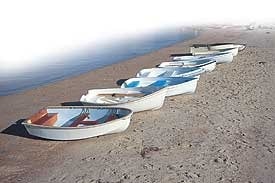
cw_9609.jpg
At a time when it seems everyone is packing RIBs or roll-up inflatables on board, why are cruising icons Lin and Larry Pardey, arctic adventurer Alvah Simon, Cruising World technical editor Ralph Naranjo, sailing writers Dave and Jaja Martin-all circumnavigators-and many others with miles and years beneath the keel so quick to praise the virtues of the seemingly archaic rigid dinghy? Because they take a beating and they work, no matter what.
In the October 2003 Cruising World, we tested rigid inflatable boats (RIBs). In the November 2003 issue, we examined roll-up inflatables. In the final installment of our boat-tender review, we look at 14 different hard dinghies, boats that will find special favor among cruisers who put simplicity and durability above all else.
During our 11 years of cruising with a homemade fiberglass dinghy, my wife, Theresa, and I rarely wished we’d had a fast inflatable or RIB. Talk to other hard-dinghy owners, and they’ll give many reasons for their preferences. A hard dinghy keeps you fit, has personality, can be rigged with a sail, is economical to buy and maintain, and, perhaps most important, can always be quickly deployed to set a second anchor or to kedge off a shoal.
If you’re convinced that a hard dinghy fits your lifestyle, here are key points to consider when choosing a model:
Size: Performance improves as waterline increases; the only real penalties for going big are added weight or lost deck space. Get the longest dinghy that you can safely fit on board and that you can drag up a beach by yourself.
Fit: Ideally, the tender should fit low on the deck overturned under the main boom or, on larger boats or center-cockpit boats, on the fantail. Davit stowage is fine for coastal hops but risky crossing oceans. Also check how thwarts and centerboard trunks fit over such deck features as hatches you may want to open for ventilation when the dink is overturned. Stability: Generally, beamier boats with flatter bottom sections have more initial stability up to about 15 degrees of heel, but rounded hulls will be stiffer when heeled more than that. For those who want inflatable-like stability in a hard dinghy, consider flotation collars like Dinghy Dogs (401-295-8382, www.dinghydogs.com).
Weight: For two- and three-person dinghies, aim for about 130 pounds or less, still light enough for one person to drag above the high-tide line. Many models are much lighter than this, all the better for your back. Manufacturers’ listed weights tend to be optimistic. See the boat, or a sister ship, and heft it yourself.
Rowing efficiency: For good performance, lightness is less important than an efficient underbody and trim when loaded. A fine bow, long waterline, canoe underbody, and minimal wetted surface are your biggest assets-but these all come with trade-offs. The slicker, stiffer hull bottoms of fiberglass boats offer less drag than the softer hulls of plastic or polypropylene boats. Except where noted, all of the boats below performed fine with one or two people aboard.
Thwart type: Centerline seats and two rowing stations allow the rower to easily shift position according to the load. A traditional thwart across the middle allows you to better stow the usual cargo. On boats with middle thwarts, you can usually add a forward set of oarlock sockets and, if needed, a removable centerline seat between the forward and center thwart to achieve proper trim with two people aboard.
Towing: Typically, either a fine full-length keel or a vestigial keel (skeg), or both, help to keep boats tracking straight. The trick is to minimize drag. If the boat tilts far aft off of its lines when towed, it’s probably inducing some extra drag. An Andersen self-bailer (available through West Marine and other marine retailers) or a similar device is worth having if you plan to tow the boat often.
Oars: Oars should be at least 6 1/2 feet long; many people prefer 7 feet or longer. In any case, make sure the oars fit inside the dinghy. Wood is the best choice (lightweight spruce is excellent) for cruising sailors. Chafe protection in the form of buttons and leathers is essential.
Oar locks: Most owners (including me) prefer round oarlocks held captive on the oars by retainers or the buttons (the leather strips that surround the inboard side of the leathers). Others prefer the traditional horn type. Take your pick, but carry a spare.
Buoyancy: Traditionally, builders achieve the essential positive buoyancy by putting airtight flotation chambers in the bow and stern seats. Other boats use foam between an inner liner and hull. The latter adds strength and allows for more stowage space but can increase weight. Sailing performance: This is a nice, but not essential, feature. You simply can’t expect screaming reaches from an 8-footer designed for the more important job of ferrying people and provisions. Nevertheless, a sailing rig expands your horizons and can be a real blast for the kids on board, particularly when other sailing dinghies are in the anchorage.
Other options: The list of options on many tenders is fairly long and can add substantially to the price of the boat. Many of them, like teak trim and floorboards, look nice, but unnecessarily add weight and maintenance. Key options to consider are the rubrail (particularly important), lifting eyes or harnesses (sometimes custom-fitted for davits), and a self-bailer or drain plug (essential for davit-stowed dinghies).
The Boats** We tried to narrow the field to 8- to 9-foot boats, a size that’s big enough for a couple but still small enough to fit on the deck of most cruising boats. Although this wasn’t a formal test, I or one of our writers-some of whom know the boats intimately-was able to row and take a close look at all of the listed boats except the Gig Harbor Nisqually, a late entry into the field, and the NN 10, which wasn’t available in time. However, we did get input from owners of the Nisqually, and we were able to test Barry Niccolls’ latest creation, an 18-foot schooner that splits into two identical dinghies and shares many common features with the NN 10. Sailing rigs are optional for these dinghies, but we weren’t able to sail every one. Any mention of a boat’s sailing ability or towing characteristics is based on comments from one or more owners.
Trinka 8: Johannsen Boat Works, in Vero Beach, Florida, has earned high regard for its 8- and 10-foot Trinkas designed by Bruce Bingham. A great all-around performer under oar, power, or sail, the 8-footer is marked by a high freeboard and plumb bow. Cruising World writers Beth A. Leonard and Evans Starzinger, who carried a Trinka (and no outboard) with them during their first circumnavigation, extol the boat’s ruggedness. “The Trinka is a joy to row, bulletproof in construction, and pretty to boot,” said Evans.
Virtues: Johannsen’s selection of smart options makes this dinghy highly customizable.
Vices: Quality construction, joinery, and hardware make the Trinka one of the more expensive boats in this group.
Walker Bay 8: A bargain buy and virtually indestructible, the Walker Bay 8 (also available in a 9-foot-6-inch version, the Walker Bay 10) answers the call for an affordable hard tender that can truly take a beating. Constructed of high-impact plastic in an injection-molding process, the Walker Bay manages a salty look with a lapstrake design that adds stiffness. For a couple of weeks last summer, I literally knocked around the cliffs, seawalls, and oyster bars of Narragansett Bay in a friend’s Walker Bay 8 with only scratches to show for it. The Walker Bay needs virtually no maintenance except for the occasional scrub. A Classic version comes with teak floor grating, stainless-steel oarlocks, and a heavy-duty nylon rubrail.
Virtues: A feathery 71 pounds, the Walker Bay is truly a snap for one person to manhandle.
Vices: The standard plastic oarlock socket wears oblong with use; upgrade to metal.
Walker Bay RID 9: For those people who like the Walker Bay’s value and durability but wish they had the load-carrying capacity and stability of an inflatable tender, the Walker Bay RID (rigid inflatable dinghy) is the answer. Incredibly stable, the Walker Bay RID 9 is the Walker Bay 8 with an inflatable PVC tube fitted along the gunwale. A larger, 10-foot-2-inch RID (the Walker Bay 10 fitted with tubes) is also available. Putting a rubber collar on a hard dinghy isn’t a new idea, but by using a tube that varies in diameter and shape, the Walker Bay RID is the first such boat I’ve seen that still looks good. And it works: I could stand on the gunwale without getting my feet wet.
Virtues: Load the RID to the brim with no worries. Although the tubes add 18 pounds, the boat’s still much lighter than others its size.
Vices: The tubes will add drag in wind and chop, slowing the boat when loaded or sailing.
Whitehall Minto: Whitehall Reproductions, in Vancouver, British Columbia, specializes in replicas of the original Whitehall boats, a working gig design most prevalent in 19th-century Boston and New York harbors. The 9-foot fiberglass Minto rows exceptionally well. We made good headway with three adults on board, even in a mild chop. A fine bow gives way to flat hull sections, so the boat remains stable during boarding. Although freeboard amidship is less than others in this group, it still provides a dry ride in chop.
Virtues: As much a museum piece as it is a workboat, the beautiful Minto excels in quality teak joinery and bronze hardware.
Vices: The rope rubrail is tougher to keep clean than the other types.
American Sail Trihull: With 42 years behind it, South Carolina-based American Sail has a good sense of what works. Slap a 2-horsepower engine on this tri-hull, and it’s just what you need when it comes to hauling people and provisions. Just shy of 4 feet wide at the bow, the tri-hull affords maximum stability and payload capacity in a boat of this size. And with double-hull construction, foam flotation in the bow, stern, and gunwales, a nonskid interior, and rugged vinyl rubrail all standard, the boat stands up well to beaching and banging.
Virtues: For the avid diver, this is probably the only 8-footer you can comfortably flop into with your fins on. Its low profile (15 inches high) fits well under most booms.
Vices: Sailing isn’t an option, although American offers another 8-foot tender in a sailing version.
Bauer 8: All three Bauer models (at 8, 10, and 12 feet, respectively) maximize hull volume with plenty of beam, generous freeboard, and flotation foam in an interior liner. The sweeping sheer and high bow are obvious when you line up the Bauer 8 beside other dinghies its size. A U-shaped bench seat aft allows the helmsman to steer from a more natural position when sailing or motoring and leaves plenty of room underneath for storage. The centerline thwart ensures perfect fore-and-aft trim and has a watertight compartment for keeping small items safe and dry.
Virtues: A little boat with big-boat features, the standard Bauer has minimal wood to worry about, although a teak-trim package is available for those who want it.
Vices: The hull’s buxom shape and an inner liner make it slightly heavy for its size.
Boatex 8: Ontario-based Boatex makes four different moderately priced tenders (rowing or sailing) between 7 and 12 feet. The 8-foot-3-inch rowing/sailing tender we looked at had an optional navy-blue sheer strake, which highlighted the Boatex’s graceful sheer and the classic tumblehome. With a 54-inch beam, the boat is very stable for its size, and the fine full-length keel gives it excellent tracking ability. With virtually no exposed wood, the standard version manages to produce classic looks without adding to upkeep. Get the optional rubrail.
Virtues: The towing eye is a failsafe metal grommet installed laterally through the stem, leaving no hole into the hull or fasteners to fail. Vices: The hanging-thwart design leaves some hard edges and a few tough-to-clean nooks and crannies.
Dyer Midget: The 8-foot-1-inch hard-chine Dyer Midget is an offspring of the famous 9-foot Dyer Dhow. Today, The Anchorage in Warren, Rhode Island, builds the five evolutions of the Dhow up to 12 feet. For use on boats with low boom clearance, Dyer offers a “Lo-sheer” version of the Midget that’s just 18 inches high. Teak trim, patented bronze castings, a bit of leather trim, and Sitka spruce spars (in the sailing version) give the Midget’s pragmatic hull a traditional accent. Alvah Simon, who relied on a Midget during his 13-year circumnavigation, had these high compliments: “It’s featherlight, very strong and durable, and stable enough for diving; it has enough of a forefoot and keel for it to tow well.”
Virtues: Any design that’s stood the test of 70-plus years has got to be good.
Vices: The large, flat floor panels will flex, but for many, this is a fair trade-off for lightness.
Fatty Knees: The Lyle Hess-designed Fatty Knees comes from Edey and Duff, a Massachusetts builder of distinctive boats with character, including Sam Crocker’s Stonehorse sloop. Available in 7-, 8- and 9-foot versions, the Fatty Knees looks a bit pudgy in plan view, but its modest sheer, prow bow, judicious use of teak and bronze, and lapstrake hull add a classic dimension to a very functional hull form. In the right hands, she’ll handle chop with aplomb when loaded full of people or provisions. As for durability, cruising icons Larry and Lin Pardey have put two decades into their 8-foot Fatty Knees and have lavish praise for the tough little boat.
Virtues: Two rowing stations ensure proper rowing trim with one to three people aboard. The offset (to port) motor mount allows enough room to steer from the aft seat.
Vices: The T-shaped centerline thwart may take some getting used to.
Gig Harbor: Located in Gig Harbor, Washington, Gig Harbor Boatworks has for 30 years been adapting proven workboat designs. In its eight-boat line, at least three models, the 7-foot-11-inch Nisqually, the 9-foot-6-inch Captains Gig, and the 10-foot Navigator Dinghy, could be suitable tenders. The Nisqually is a scaled-down version of a utility boat commonly rented out for recreational purposes during the 1890s. The optional Kevlar-reinforced version of the Nisqually, cored with Klegecell foam, is exceptionally light and strong; the heavier, solid-fiberglass version is still quite light thanks to its single-skin lapstrake construction. The low-maintenance Nisqually, a capable rower, sailer, and powerboat, is a true multipurpose dinghy.
Virtues: Lightness and low maintenance are hallmarks of the Nisqually. Vices: Gig Harbors are built one at a time, so don’t expect overnight delivery. ** HunterLiberty:** In building the 10-foot-2-inch Liberty, which Hunter Marine introduced last year, large extruded sheets of a rugged plastic are superheated until pliable, then vacuum-pressed onto the molds, one for the hull, another for the hull liner. Flotation foam backed by fiberglass mat is added on the inside of the hull and liner before the two parts are joined. The stiff, virtually unsinkable hull looks and feels like fiberglass but has five times the impact resistance and none of the gelcoat-maintenance worries. With lean, Whitehallish styling and a fine bow, the Liberty is an excellent rower and is light enough for a couple to handle easily.
Virtues: The revolutionary production process permits an attractively low price.
Vices: The ultra-slick hull will need some nonskid pads for better footing.
NN 10: Searching for a hard dinghy to fit on his Coronado 27, entrepreneur and avid cruiser Barry Niccolls came up with a fairly narrow 10-footer that could be separated into two halves, with the 40-pound bow section nesting inside the 60-pound, 5-foot-8-inch-long aft section. Either half has enough foam flotation in sealed thwart chambers to float on its own. Normally, you attach the two halves in the water from a kneeling position in the aft hull. Stainless-steel latches and a special fastening system make joining the two bulkheads quick and easy. Rubrails made of PVC hose and the polyethylene seats reflect the boat’s utilitarian priorities.
Virtues: You get a bigger dinghy without sacrificing the deck space or having to heft 110 pounds or more at a time.
Vices: The production rate is limited, so you can expect to wait three months or more.
Portabote:** For three decades, Portabote has built a loyal following with its unconventional folding boats made of flexible polypropylene. The company makes four models that range from 8 feet 6 inches to 14 feet 6 inches, each of which folds into a package that’s slightly longer than its length, less than 25 inches wide, and about 4 inches thick. The 12-foot-6-inch model we tried can stow folded on boats that normally would carry much smaller dinghies. A sailing kit is available, but this planing-hull design works best with a motor.
Virtues: Despite (and partly because of) the flexing hull, it’s stable enough to waltz in.
Vices: The standard oar setup leaves much to be desired; convert to traditional oars and oarlocks if you plan to row.
Puffin 8: Frankfort Boat Works, in Frankfort, Maine, offers three models of its Puffin in lengths from 7 feet 6 inches to 10 feet 6 inches, with a sailing-rig option available for the two larger boats. The 8-foot-6-inch model we tried is typical of the good-looking, utilitarian tenders you’ll see in Maine, where “pulling” for work or pleasure is part of the fabric of life. This single-skin fiberglass vessel struck us as a nice compromise of weight, appearance, performance, and price. Long, flat sections and adequate beam make it a stable boat for its size. It’s light enough for two people to manage yet built to take the knocks that Maine’s rocky shore can dish out.
Virtues: A hollow PVC rubrail and only a smattering of wood trim keep maintenance hassles down. The grip of the buff-colored nonskid surface is excellent, even when wet.
Vices: The price-point Puffin’s finish quality is a tad lower than the more expensive boats.
| Model | Length Overall | Max Beam | Draft/ Draft with Board Down | Load (persons/ weight lbs.) | Weight (pounds; without oars or sailing kit) | Sail Area (sq. ft.) | Max HP | Sugg. Price | Sailing Version | Contact |
|---|---|---|---|---|---|---|---|---|---|---|
| American Sail Tri-Hull 8 | 8′ 1″ | 4′ 3″ | 4″ | 3/450 | 95 | NA | 2 | $895 | $1,595* | (843) 552-8548, www.americansail.com |
| Bauer 8 | 8′ 2″ | 4′ | 4″/1′ 8″ | 3/465 | 95 | 40 | 2 | $995 | $1,800 | (904) 824-8826, www.bauteck.com |
| Boatex 8 | 8′ 3″ | 4′ 6″ | 4″/2′ 4″ | 3/500 | 75 | 40 | 3 | $1,075 | $1,795 | (905) 294-9454, www.boatexltd.com |
| Dyer Midget | 8′ 1″ | 4′ 1″ | 5″/2′ 5″ | 3/465 | 83 | 36 | 2 | $2,080 | $3,320 | (401) 245-3300, www.dyerboats.com |
| Fatty Knees 8 | 8′ 0″ | 4′ 3″ | 2″/3′ 3″ | 3/NA** | 100 | 50 | 2 | $1,995 | $2,945 | (508) 758-2743, www.fattyknees.com |
| Gig Harbor Nisqually | 7′ 11″ | 4′ 5″ | 6″/2′ 0″ | 3/NA** | 72 | 38 | 2 | $895 | $1,895 | (253) 851-2126, www.ghboats.com |
| Hunter Liberty | 10′ 2″ | 4′ 1″ | 6″/2′ 6″ | 3/371 | 105 | 45 | 3 | $1,200 | $2,025 | (860) 739-3033, www.huntermarine.com |
| NN 10 | 10′ 2″ | 4′ 5″ | 2″/2′ 0″ | 3/500 | 100 | 70 | 3 | $2,295 | $3,295 | (604) 218-8027, www.niccollslite.net |
| Puffin 8 | 8′ 6″ | 4′ 1″ | 5″/2′ 1″ | 3/425 | 75 | 39 | 3 | $920 | $1,790 | (207) 223-2273 |
| Portabote 12 | 12′ 6″ | 5′ 0″ | 4″/1′ 5″ | 4/670 | 69 | 52 | 54 lbs.*** | $1,395 | $1,990 | (650) 961-5334, www.porta-bote.com |
| Trinka 8 | 8′ 0″ | 4′ 0″ | 4″/1′ 6″ | 3/450 | 95 | 38 | 2 | $2,275 | $3,095 | (772) 567-4612, www.trinka.com |
| Walker Bay 8 | 8′ 3″ | 4′ 4″ | 2″/1′ 8″ | 2/425 | 71 | 39 | 2 | $630 | $1,280 | (604) 682-5699, www.walkerbay.com |
| Walker Bay RID 9 | 9′ 0″ | 5′ 8″ | 2″/2′ 7″ | 3/410 | 89 | 50 | 4 | $1,330 | $2,230 | (604) 682-5699, www.walkerbay.com |
| Whitehall Minto | 9′ 1″ | 4′ 2″ | 6″/1′ 10″ | 3/480 | 130 | 46 | 4 | $3,450 | $5,260 | 250-384-6574, www.whitehallrow.com |
- Sailing version is a different boat with traditional hull design. ** No capacity is given, since boat is rated as a sailboat. *** Maximum engine weight is limiting factor.
- More: dinghy , Gear

PredictWind Introduces PredictCurrent App

Musto’s MPX Impact is Made for Offshore

Awlgrip Unveils 3D Color Visualizer

Weems & Plath Introduces BrightWind

Fatty Goodlander: Where I Fall Short as Skipper

For Yachts or Home, Teak Stands the Test of Time

Shaft Bearing Maintenance Tips

Sailboat Preview: 2 Sportboats We Love
- Digital Edition
- Customer Service
- Privacy Policy
- Email Newsletters
- Cruising World
- Sailing World
- Salt Water Sportsman
- Sport Fishing
- Wakeboarding
- VENDEE GLOBE 2024
- French | fr
- German | de
- Italian | it
- Spanish | es
- United-States | us
- English | en
- Zodiac Nautic
- Boat tenders
Tenders & Yacht Dinghies
In addition to your main yacht, sailboat or catamaran,, cadet roll up.
Inflatable dinghy with wooden slatted floor
Its floor, in a wooden slat design, can be rolled and stored in seconds.
Inflatable dinghy with inflatable floor
Very simple and above all really compact! Completely flexible, including the floor, it can be folded and stored in less than 2 minutes in a suitable bag!
CADET RIB ALU
RIB dinghy with aluminium hull
A truly solid-hull dinghy (aluminium), which provides the best in stability and safety on board!
Inflatable dinghy with aluminium floor
An aluminium floor, which can be put in place in no time for maximum stability.
Nomad RIB Alu
New tenders with a double floor, waterproof storage, and top-quality tubes!
CADET RIB ALU DL
Its biggest asset is its locker: Your backpack or today’s picnic will fit in just fine…
The smallest Open
Ideal for a first boat with room for 4 people on board, it is easy to manoeuvre and tow. Ideal for small budgets.
The ideal electric dinghy
Whether used as a dinghy or a funky little boat, this 3.4 is more environmentally friendly than ever and requires no maintenance.
Ideal dinghy or small robust boat
The 3.4 is sure to please: Easy to steer, 3 large storage lockers! A true little racing kart that will delight you and your guests.
YACHTLINE 360
The smallest Yachtline
An ideal size to accommodate 4 people on board, with a maximum power of 40 HP, it can carry its passengers at high speed.
YACHTLINE 400
Well equipped
The Yachtline 400 can carry 5 passengers with its 3 seats and 50 HP.
The smallest Pro
A traditional model, it has always been part of the Zodiac range.
Unbeatable value for money
Ideal model for fishing and cruising with family or friends with its 4 large seats that can accommodate 6 people on board and its large lockers.
YACHTLINE 440
The right compromise
The ideal complement to transport 6 people, with its numerous storage lockers and its 60 HP.
The biggest of the compact Open
A generous power output of up to 80 CV is a big asset, and it is ergonomic and spacious for comfortable and active days out.
YACHTLINE 490
The biggest
At 4.90m and 90 HP, it can be used as a main boat for up to 9 people. It can also tow water-skiers or wakeboarders.
OUR NAVIGATION PROGRAMS
Are you looking for a tender or dinghy model for your yacht, sailboat or catamaran? The choice of boat will depend on your intended use, frequency of trips, sailing areas and your expectations. Choose a comfortable, innovative and powerful boat that you can accessorise according to your taste and needs. You will already have basic equipment: lifting and towing rings, bench, paddles or oars, many handles … for the comfort of the pilot and the passengers. The design of your dinghy will perfectly match your yacht thanks to its elegant aesthetics. Your RIB dinghy guarantees you excellent performance, great sailing comfort and spaciousness for regular use. Its sturdiness ensures greater safety at sea where the weather is particularly unpredictable.
Versatility
Yacht dinghies serve you both as lifeboats or support boats to get the pilot, crew and guests to land or shore, but also as leisure crafts due to their versatility. The size and engine of the tender mean it can be used as a pleasure boat for sea trips with friends or family; from 4 metres upwards for the larger models. So go and explore some beautiful places. The finish and quality of the accessories ensure the longevity of your boat.
Power and agility
In our range, you will find 100% electric tenders like the eOpen, but also ones with hydrojet propulsion, such as the eJet. This modern technology, which uses a turbine to draw in water and propel it quickly to move the boat forward, offers a more fun and agile way to steer. Compared to an outboard boat with a propeller engine, waterjet propulsion offers greater safety, the ability to sail in shallow water and faster acceleration.
Tender models with rigid hulls such as the CADET RIB ALU, the small OPEN, the eOPEN, or the Yachtline provide you with more stability at sea, even in difficult weather conditions. This gives you more space on board for passengers and storage.
ALL CAPABILITIES
- Boats for 4 people and above
- Boats for 6 people and above
- Boats for 10 people and above
- Boats for 14 people and above
- Boats for 20 people and above
- Tenders from 2 to 3 meters
- Boats from 4 to 6 meters
- Boats from 6 to 8 meters
- Boats from 8 meters boats and above

Fiberglass Hull option
The water offers endless possibilities, and so does the BRIG Falcon Tender. A perfect companion to your yacht or powerboat, this RIB tender boat continues the legacy of BRIG for quality, performance and safety. Whether you’re a solo adventurer or group traveler, this rigid inflatable yacht tender will fulfill your sense of adventure, your thrill for adrenaline and your love of relaxation.
BRIG Falcon Tender Series
Escape with family and friends to secret hideaways, dive deep into unexpected adventures, make your great escape with brig usa.
Eagle Navigator Falcon Tender
About Dealers Resources Sitemap
DEALER INQUIRIES
Dealer Development
Email: [email protected]
Proud supplier of:

Privacy Overview

IMAGES
VIDEO
COMMENTS
Tender Pricing Vs. Quality. There are cheap dinghy options out there, but you often get what you pay for. A proper tender is not only a representation of your yacht but an integral part of your boating experience. The yacht may do the heavy lifting on a voyage, but the dinghy is your transportation once you're on anchor or a mooring.
Size and Capacity. The ideal dinghy size depends on your yacht's size and how you intend to use the tender. If you primarily need a shuttle for a couple of people and light gear, a smaller dinghy (8-10 feet) may suffice. However, if you anticipate carrying more passengers, equipment, or supplies, a larger tender (12-14+ feet) would be more ...
Yacht Tenders 101: Different Types and Uses. Yacht tenders come in a range of shapes and sizes and are dependent on a variety of factors, from the owners' use of the vessel, to how large the yacht is to what activities guests wish to carry out. Tender boats are often divided into the following categories: RIBs, Limousines, Custom Tenders, Jet ...
Here are some key points on yacht tenders: Types include rigid inflatable boats (RIBs), jet skis, and traditional dinghies. RIBs are popular due to their stability, versatility and durability. Jet skis offer speed and agility, great for water sports fans. Traditional dinghies are often used for auxiliary boats or life rafts.
Above: A 2022 Polycraft 300 Tuffy tender boat for sale on Boat Trader by Nautical Ventures in Sarasota, FL. This lightweight plastic hull tender (made of polyethylene, a thermoplastic polymer) is strong, durable and easy to maintain, clean and repair. Photo via Nautical Ventures. Hard dinghies also vary in size, weight and design and are made ...
Classic Daysailer. Rigid Open Classic Stow. Strip back the layers of modernity that clothe large motor yachts and delve into a tactile sailing experience with a classic daysailer. Built a short distance upriver from SYTT, the Spirit R30 is a daysailer that marries cinematic elegance with unparalleled craftsmanship.
Take very thorough measurements of the space and height available for it rather than taking a risky shot in the dark. Determine if the tender will be lifted or towed. If you already have a tender garage, consult with the builder or dealer as they likely already know the largest sized tender than can fit. Speaking to owners of the same models is ...
Tenders may just be the Rodney Dangerfields of the yachting world. They're expected to start and run flawlessly on a moment's notice and perform myriad tasks during a given trip — everything from ferrying passengers and gear to pulling kids on a wakeboard. And once someone owns a tender, he or she gives it the bare minimum of maintenance ...
A tender boat—also simply called a tender—is essentially a smaller craft that runs back and forth from a larger yacht or ship. Tender boats address the needs of the larger craft, performing tasks that the bigger boat cannot. They can be used for a variety of purposes, including fetching supplies and equipment, transporting passengers, or ...
What is a Yacht Tender? A yacht tender is simply a small craft that is used for servicing and supporting a larger vessel, usually a yacht or charter craft. In a perfect world, getting on and off a yacht would be easy; every port would provide easy docking, and all boats would be able to pull right to the port, as well as each other. But this is ...
Conclusion. Choosing the right tender for your boat is an essential part of your cruising lifestyle. By considering factors such as size and weight, storage, capacity, performance, durability, and price, you can find the perfect tender to meet your needs and enhance your sailing adventures. Whether you choose an inflatable tender, RIB, hard ...
Outboard engines are the most common type of propulsion system used in tenders. They are relatively inexpensive, easy to maintain, and provide good power and speed. Outboard engines are also easy to install and remove, making them a popular choice for tenders that are often used for multiple purposes. On the other hand, outboard engines can be ...
April 9, 2018. For many boat owners tenders, or dinghies as they are also known (and in this instance we mean small boats powered by an outboard or oars, as opposed to sailing dinghies ), are a vital all-purpose workhorse used for everything from going to the pub to ferrying supplies and spares. For others they also have to double up as ...
Top 15 Tenders and RIBs Here's a look at some of today's top Tender and RIB builders and their models. A rigid deep-V hull made from composite plastic, fiberglass or aluminum—a Rigid Inflatable Boat—is an efficient high-performance planing hull, but RIBs often must be stored on a trailer or set of hanging davits.. Tougher fabrics, lighter accessories and more powerful engines have ...
A little boat that runs back and forth to a bigger boat (or ship) is called a tender—because it tends to the needs of the larger craft. Moderately sized recreational boats call their tenders dinghies. A dinghy can be as simple as a rowboat, or as high-tech as a twin-engine rigid hull inflatable —it all depends on the size of the mother ship ...
Short answer: Tender vs Dinghy A tender is a small boat used primarily for transport between a larger vessel and the shore, whereas a dinghy is a small boat typically used for recreational purposes or as a lifeboat. Tenders are usually designed with greater stability and carrying capacity for passengers and supplies, while dinghies prioritize.
MasterCraft XT20. If you want your tender to do more than just ferry people and provisions ashore, it makes sense to invest in a multi-purpose, saltwater tow boat - and MasterCraft's XT20 is the ideal candidate. It comes with a spacious lounge, plus a classic 'pickle-fork' bow to expand the forward space. It also features a rather ...
About 60 tenders of all stripes and sizes were on display at last month's Monaco Yacht Show, from Novamarine's Black Shiver 160, stretching 56 feet in length (too large for most superyachts to ...
Argos Nautic offers tenders with all three power options to suit your needs. Our GT Series tenders come with reliable outboards and are available either 11 (30 to 40 horsepower) or 14 feet long (50 to 70 horsepower). The Jet Series tenders are 9.5 or 11 feet long and come with a reliable 100-horsepower, inter-cooled, turbocharged motor.
Fibreglass tender boats, if designed well can be stable. They have a softer ride than an aluminium boat, with less moving underneath than a inflatable boat. They also offer low maintenance since as they are fully sealed. The fibreglass and epoxy is generally painted with a 2 pack paint to help with UV resistance.
In its eight-boat line, at least three models, the 7-foot-11-inch Nisqually, the 9-foot-6-inch Captains Gig, and the 10-foot Navigator Dinghy, could be suitable tenders. The Nisqually is a scaled-down version of a utility boat commonly rented out for recreational purposes during the 1890s.
In addition to your main yacht, sailboat or catamaran, Equip your yacht with a high-quality tender to serve as an aid and to enable you to have fun. Choose an RIB yacht dinghy with a rigid hull and a neoprene/hypalon or PVC inflatable tube, which is very popular for its robustness, space and great agility. You can store your auxiliary craft in ...
Falcon 330. Falcon 300. BRIG Falcon Tender Series. Escape With Family and Friends to Secret Hideaways. Give your weekends away an upgrade with the power and performance, as well as smooth riding, of the BRIG Falcon Tender. Anchor your yacht off the coast or harbor of your favorite retreat, and then hit the water with your RIB tender boat.